 US Navy 19 Escort Aircraft Carriers (1943-45) 35 planned, 16 cancelled) CVE-105 – CVE-123:
US Navy 19 Escort Aircraft Carriers (1943-45) 35 planned, 16 cancelled) CVE-105 – CVE-123:Commencement Bay, Block Island, Gilbert Islands, Kula Gulf, Cape Gloucester, Salerno Bay, Vella Gulf, Siboney, Puget Sound, Rendova, Bairoko, Badoeng Strait, Saidor, Sicily, Point Cruz, Mindoro, Rabaul, Palau
WW2 US Carriers:
USS Langley | Lexington class | Akron class (airships) | USS Ranger | Yorktown class | USS Wasp | Long Island class CVEs | Bogue class CVE | Independence class CVLs | Essex class CVs | Sangamon class CVEs | Casablanca class CVEs | Commencement Bay class CVEs | Midway class CVAs | Saipan classThere were two types of mass-produced escort carriers during WW2: Those based on cargo hulls, and those based on tanker hulls. If the Bogue class, based on C3 Hulls, inspired to Kaiser shipyard the purpose-built Casablanca class, the Sangamon class Tankers led to the Commencement Bay, not converted tankers but ships reusing the T3 hull. Built as carriers from the keel up and with the engineering shortcomings of the Sangamon addressed. In all, 35 were ordered, of which 19 were cancelled as they arrived late: The lead ship USS Commencement Bay was indeed launched on 9 May 1944 and so most completed in 1945 saw little to no operational service. After the war various preconisations led to conversions into helicopter carriers, ASW or assault ships and most saw service in the Korean War. They however were retired in the sixties, sold 1960-71. #ww2 #usnavy #USN #unitedstatesnavy #aircraftcarrier
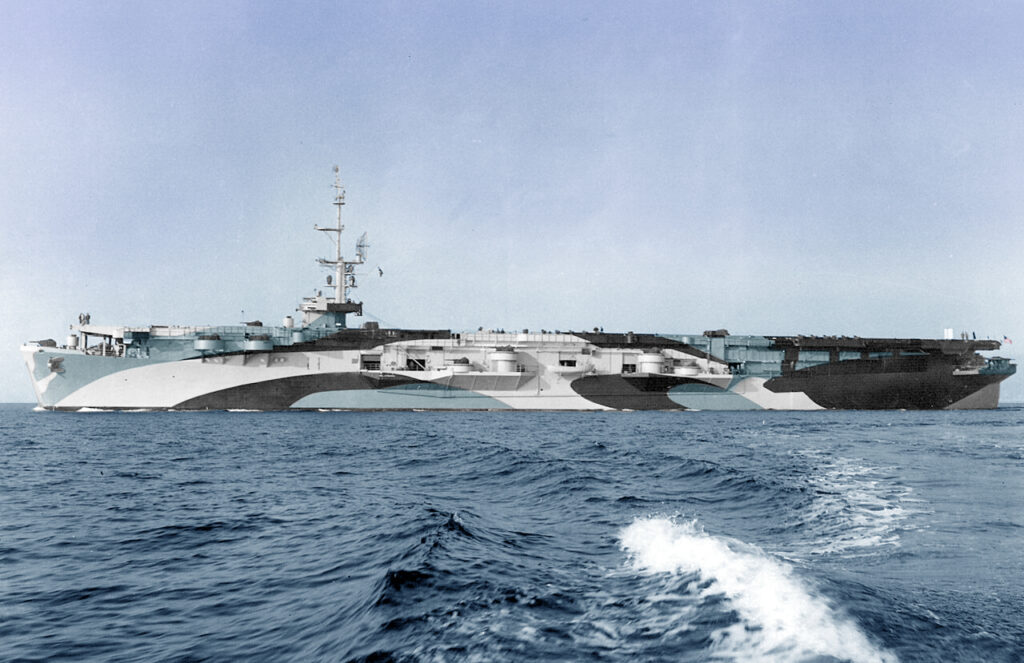
Details of developments are not known, poor information online of details on when the initial proposal was made, BuShip proposal, counter-proposals, reunions, and full plans drawned by Gibbs and Cox in New York. Plans unfortunately had not been released in creative commons. There are however many website selling pdf HD copies of the booklet such as on navsea.navy.mil precising “Navy model catalog #353, length 139″ (3.531m), scale 1:48, delivered February 14, 1949.” The original booklet is on sale on worthpoint. The most important date is that these ships were authorized for Fiscal Year 1944, as an improved version of the Sangamon design.
Builder: Todd Pacific Shipyards
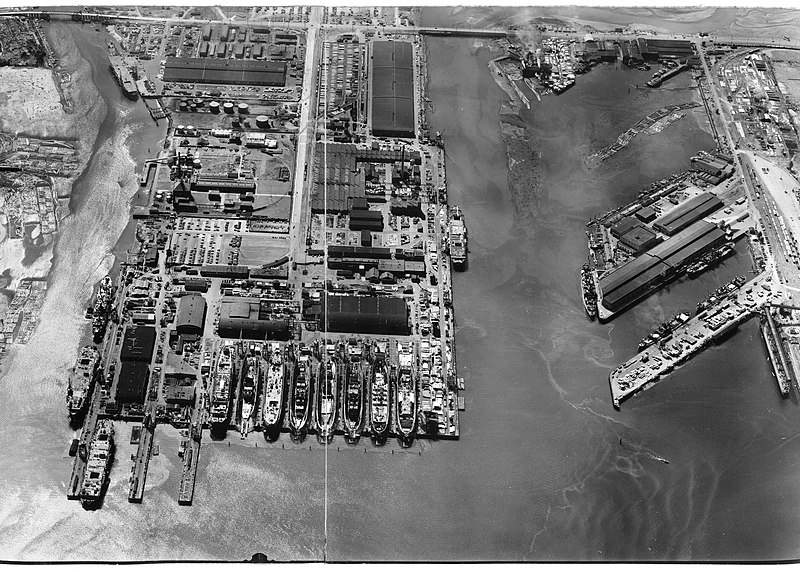
Todd Tacoma in 1945
Builder was unique, the Seattle-Tacoma Shipbuilding Corporation (a.k.a. Todd Pacific Shipyards) located in the Commencement Bay, Tacoma (Washington yard) which also gave its name to the lead vessel. All ships were named after bays along the US coast but also landing areas in the Pacific, and many were also renamed. A further serie, CVE-132 through CVE-139 were to be built by Kaiser Shipbuilding Company in Vancouver but never laid down.
After Kaiser, the Seattle-Tacoma Shipbuilding Corporation was the other giant of naval construction in the wartime US, only capable to deliver than many ships in short time. Based at Seattle of the North Pacific Coast, no far from the Canada border and Vancouver, the yard also known as Todd Pacific built escort carriers, destroyers, cargo ships and auxiliaries, so both provided the United States Navy and merchant marine. Activities were split in two yards, the second being at Puget Sound, Washington. The corporation was the largest producer of destroyers (45) on the West Coast and of escort carriers of various classes (56) after Kaiser. For the anecdote, “commencement” means “beginning” in French.

Launch of USS Rabaul, CVE-121
Historically it was establushed in New York, but acquired the Seattle Construction and Drydock Company (Moran Brothers Shipyard, Klondike Gold Rush) and relocated in Seattle Harbor in 1916, starting wartime production. It was acquired in 1918 by Skinner & Eddy Todd and relocated to nearby Harbor Island, with a repair facility constructed. By 1917 another yard was established in Tacoma, with new facilities buit by January 1917, first ship launched there on March 28, 1918 and responsible for three Omaha-class light cruisers, 23 cargo ships, whereas the single Caldwell-class destroyer USS Gwin (DD-71) and N-class submarines plus 14 cargo were built in Seattle.
But shipbuilding ceased in the Seattle yard in 1920 and Tacoma yard in 1924 and William H. Todd died May 15, 1932, with John D. Reilly becoming new CEO. In 1939, the old Tacoma shipyard in Commencement Bay was revived and the two slipways were considerably enhanced, the congress voted a $15 million aid for the yard to add six more and ramp up production of all types of vessels.
TODD Shipyards soon built five C- 1 Type B cargos at Seattle-Tacoma and constant dialogue with the Maritime Commission helped to restore Pacific Northwest shipbuilding industry as well as for Kaiser. There was a strong cooperation between Seattle and Tacoma labor, which workers went to one or the others. They divided tasks, completion and outfitting often made at Todd Seattle Dry Docks Inc., in Seattle. First Navy order from the Two-Ocean Navy Act was 25 destroyers with an extra $9 million in finaincial help to built a dedicated destroyer construction facility on Harbor Island starting operation by October 15, 1940.
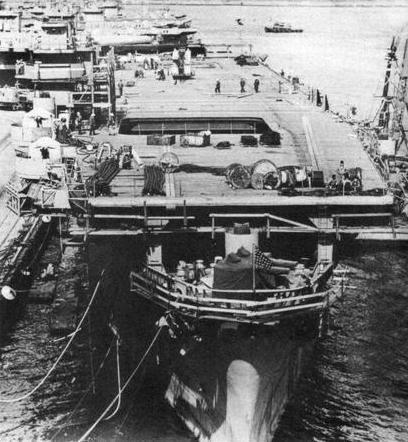
USS Gilbert Island CVE-107 being reactivated at the Boston Naval Shipyard in 1952
In February 1942, Todd bought out Kaiser’s holding, sold their interests in Permanente Metals and by June 1, 1944 the Seattle-Tacoma Shipbuilding Corporation became officially the “Todd Pacific Shipyards, Inc.” the Tacoma shipyard being resold to the Navy in 1946, and in turn, resold to the Port of Tacoma in 1959.
The Yard will produce, outside the 20+ escort carriers planned (Three completed at Commercial Iron Works in Portland, Oregon (CVE-110, CVE-126, CVE-121) and one completed at Willamette Iron and Steel Works in Portland, Oregon (CVE-108)), but also 37 out of 45 Bogue-class escort carriers, 14 auxiliaries of the Frederick Funston-class attack transports, Kenneth Whiting-class seaplane tenders, Patapsco-class gasoline tankers, Shenandoah-class destroyer tenders and five of 95 C1-B cargos. It’s experience with the Patapsco (T1 type) naturally led to the move to the T3 tanker design. The Seattle yard built on its side 10 of 66 Gleaves-class DDs, 21 of 175 Fletcher-class DDs, 5 of 58 Allen M. Sumner-class and 9 of 98 Gearing-class and one Shenandoah-class destroyer tender.
About the T3 Tankers
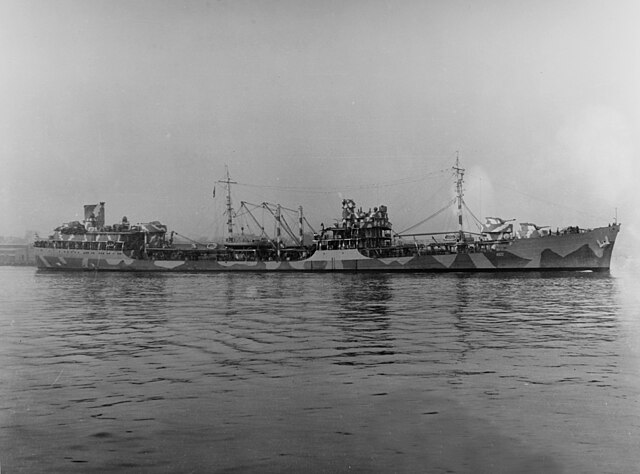
USS Cimmaron (AO-22) off Norfolk Naval Shipyard in February 1942, with four ships converted into the Sangamon class.
The T3 tanker, were seaworthy large tanker made in part for the Merchant Marine under the MARCOM and the USN as auxiloaries (AO-). They were used to transport fuel oil, gasoline or diesel. With 51 ships built (T2 Tankers: 533 built) they still saw World War II, the Korean War and Vietnam War. T3 tanker classification is still used today and they had a full load displacement of about 24,830 tons.
There were six main designs:
T3-S-A1 tanker: Also Chiwawa-class oiler with 2 steam turbines, 1 screw 7,700 shp 15 kn 501 ft × 68 ft × 29.6 ft 9,880t/133,800 bbl
T3-S2-A1 tanker: Cimarron-class oiler: 2 screws, 4× turbines 13,500 shp, 18 kn 553 ft × 75 ft × 32 ft 11,335t/146,000 bbl
T3-S2-A3 tanker: Ashtabula clas, 2 shafts geared turbines 30,400 shp 18.3 kn 553 ft × 75 ft × 32 ft 7,423t/146,000 bbl (23,200 m3)
T3-S2-A3: “jumboized” to 644 ft × 75 ft × 36 ft 12,840t
T3-S-AZ1 tanker: 1 shaft, 5-cyli 2-cycle oil engine 7,500 shp 15.5 kn 547 ft × 70 ft 11,401t
T3-S-B tanker: 1 shaft, 2x steam turbines 7,700 shp 14 kn 515.9 ft × 70 ft 11,016t/140,000 bbl
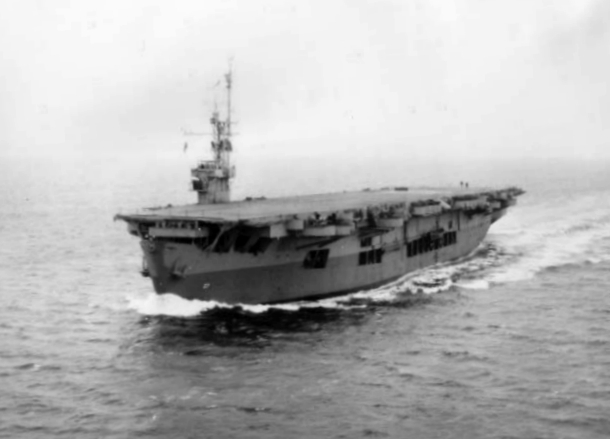
USS Suwanee (CVE-27) off Puget Sound 31 Jan 1945.
Of these, the T3-S2-A1 tanker (17 completed), were first commissioned by the US Navy in 1943 as the Cimarron-class oiler, four converted to escort carriers (CVE). Crew 304, range 12,100 nautical miles (22,400 km; 13,900 mi). The AO-22 to AO-33 were armed with four single 5-inch/38, four twin 40 mm AA, four twin 20 mm AA. After AO-51 they only had a single 5-inch/38 cal. gun, four 3-inch/50 and the same AA.
The Sangamon class (Sangamon, Suwannee, Chenango, Santee CVE-26-29) were already in service, launched in 1939, and converted in emergency in late December 1941, recommissioned as carriers in August-September 1942. Conversion time was six months on average and it was hoped for the next class to be built in five months at most. The Sangamon class proved very successful ships, notably by design was their machinery was located aft, providing more ample space for internal facilities.

Large blueprint of the original tanker, used as a base of design. Pretty much everything below the waterline was left mostly unchanged. The Commencement Bay design was refined by Gibbs & Cox Company of New York. Full plans PDF
They were both roomy and tough, with a large flight deck, good stability on even high seas and a large complement of 30+ aircraft, also being the only escort carriers to operate dive bombers. They proved versatile and served in the Mediterranean, Atlantic and Pacific Campaigns with three damaged by Japanese kamikaze attacks at the Battle of Leyte Gulf but survived, as part of Carrier Division 22. The battle damage was unknown when the Commencement Bay design was started (yet) but the advantages of the tanker-based design was clearly seen as beneficial with reports from the class in 1942-43.
Design of the class
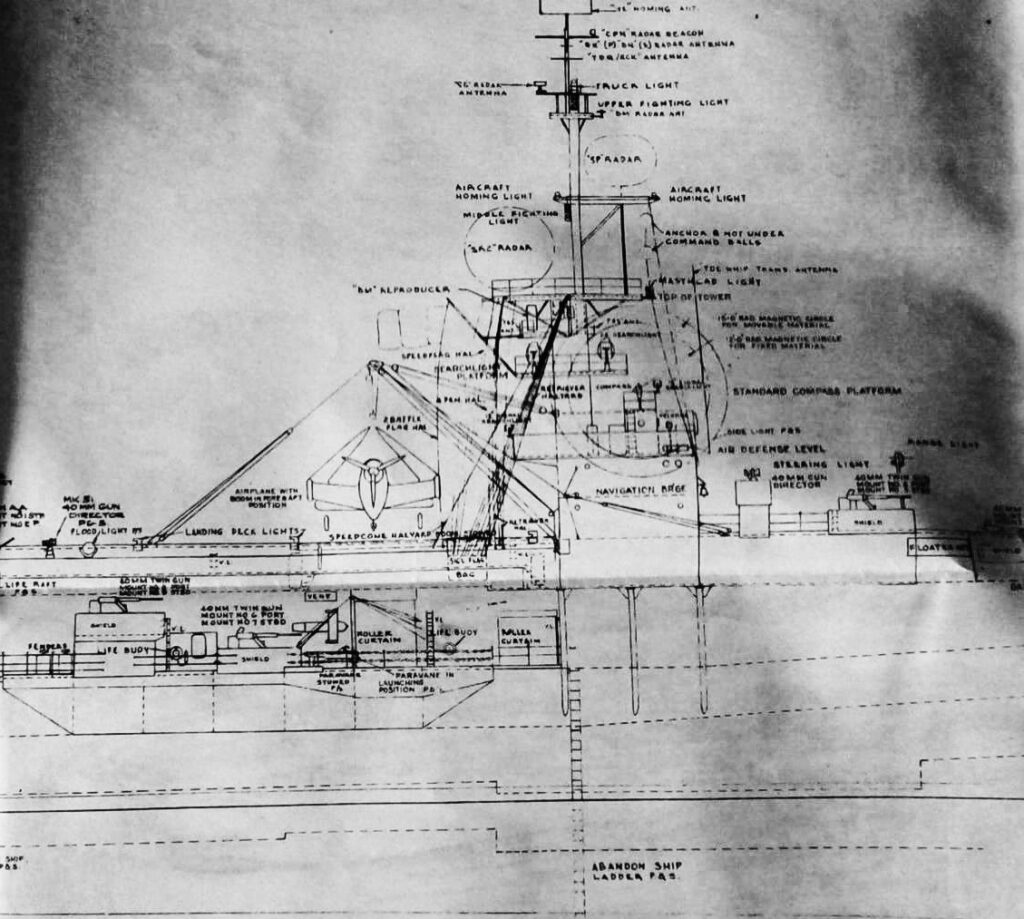
Island design, plans extract.
As the idea of reproducing the success of the Kaiser-built Casablanca following the Sangamon design, it was decided to were to base them on the hull of the Maritime Commission type T3 tanker, with a much larger displacement reaching 23,000 tons over a generous 557 feet (170 m) lenght. They were not converted by mid-construction, but built from the keel up as escort carriers, the first (the next ones, Saipan class, were also built in plans, with heavy cruisers hull designs). The general layout repeated the Sangamon-class but also solving engineering shortcomings with a more refined powerplant.
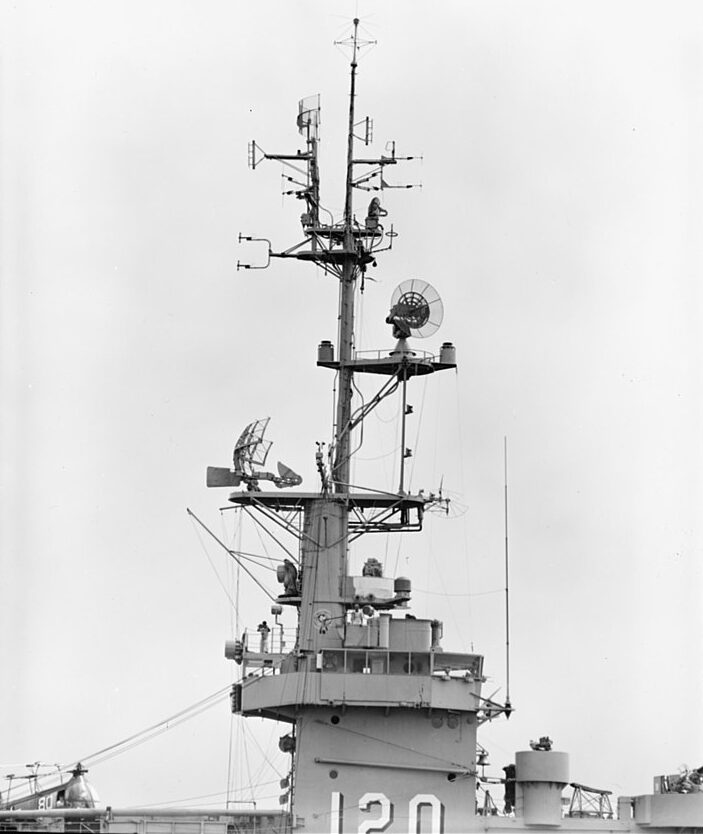
Island on USS Mindoro, starboard view. The latter was probably the best of any CVEs and was repeated for the Saipan class.
Hull and general design
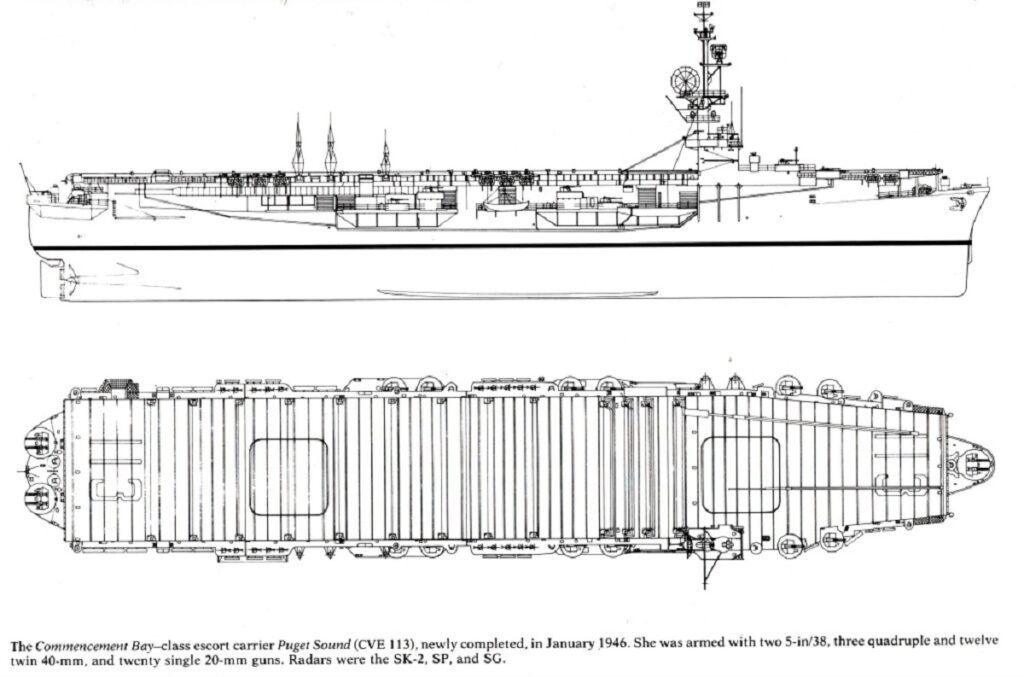
Reusing the same T3-S2-A1 tanker (or Cimarron class) hull, the new ships were pretty close to the Sangamons in general hull design, with the same shape, and dimensions. Displacement reached 10,900 long tons (11,100 t) standard and 24,100 long tons (24,500 t) full load, for an overall length of 557 ft 1 in (169.80 m), in parallels 525 ft (160 m) at the waterline and on the flight deck, 501 ft (153 m) as like previous Sangamons, the poop and prow extended longer, allowing to fit axial guns. In Beam, they reached 75 ft (23 m) at the waterline, more at the flight deck level: 105 ft 2 in (32.05 m). In Draft they reached 30 ft 8 in (9.35 m).
To compare, the previous Sangamons displaced a bit more at 11,400/24,275 long tons but were shorter at 553 ft (169 m) long overall, same beam but larger width for the flight deck at 114 ft (35 m) in extreme width.
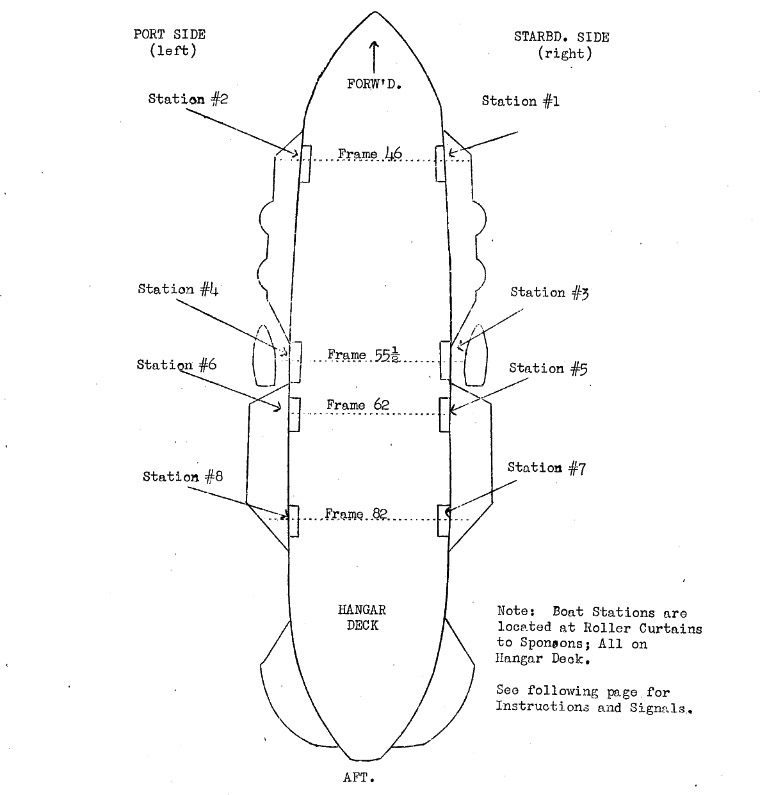
Safety measures aboard the Ct. Bay. Extract from the builder’s trials handbook, USS Rendova, Willamette NyD, Portland Oregon. The 8 Emergency stations and roller curtains to sponsons
Powerplant
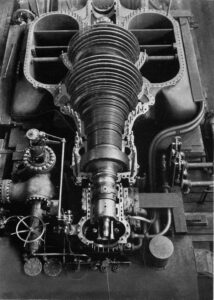 At first they had the same machinery as the original tankers, two sets of Allison-Chalmers geared steam turbines, fed by the steam provided by four Combustion Engineering boilers. Two shafts with bronze three-leaf propellers, a single rudder. In total this powerplant provided 16,000 shp, for a top speed of 19 knots as seen already (22 mph; 35 km/h). For range, they carried 1,789 tons of oil, which was surprisingly less than the Casablancas (2,228 tons) for range of 10,200 nm at 15 knots whereas the Commencement Bay class was about 10,000 also.
At first they had the same machinery as the original tankers, two sets of Allison-Chalmers geared steam turbines, fed by the steam provided by four Combustion Engineering boilers. Two shafts with bronze three-leaf propellers, a single rudder. In total this powerplant provided 16,000 shp, for a top speed of 19 knots as seen already (22 mph; 35 km/h). For range, they carried 1,789 tons of oil, which was surprisingly less than the Casablancas (2,228 tons) for range of 10,200 nm at 15 knots whereas the Commencement Bay class was about 10,000 also.
However 1788.5 tons fuel oil bunkerage is also given in some sources, providing 8,320 nautical miles (15,400 km) at 15 knots.
Armament
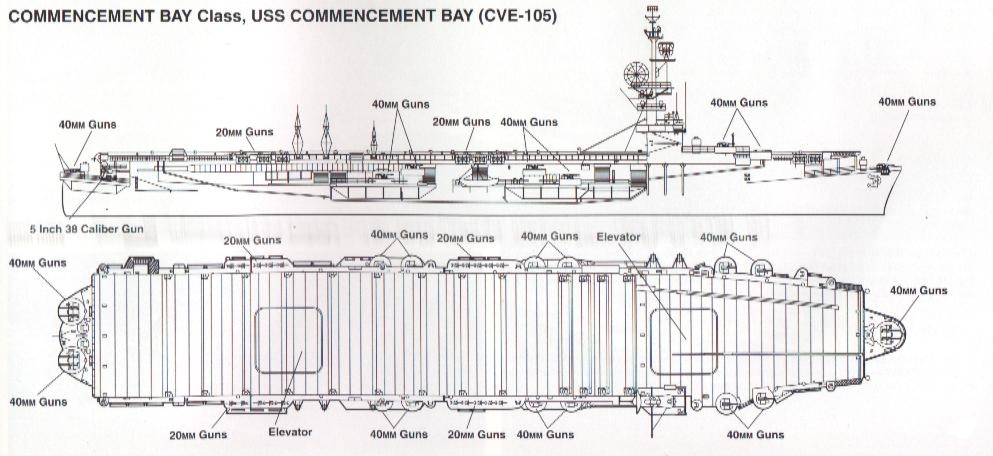
This was increased and better managed compared to previous CVEs like the casablanca and also helped by more generous dimensions: CVE105, 106 and 107 were completed with two single 127mm or 3-in/38 Mk 12 guns, three quad 40mm/56 Mk 1.2, and twelve twin 40mm/56 Mk 1.2, plus twenty single 20/70 Mk 4 Oerlikon, so in total no less than 46 AA cannons. The 20 mm were already recoignized in 1944 as unsufficient to stop a Kamikaze but they were kept still just to add extra firepower, literrally crammed into any sponson space possible.
804 tons of ammunition were carried total, between the ones for the air group and ship’s armament.
Main: 2x 5-in/38 Mark 12
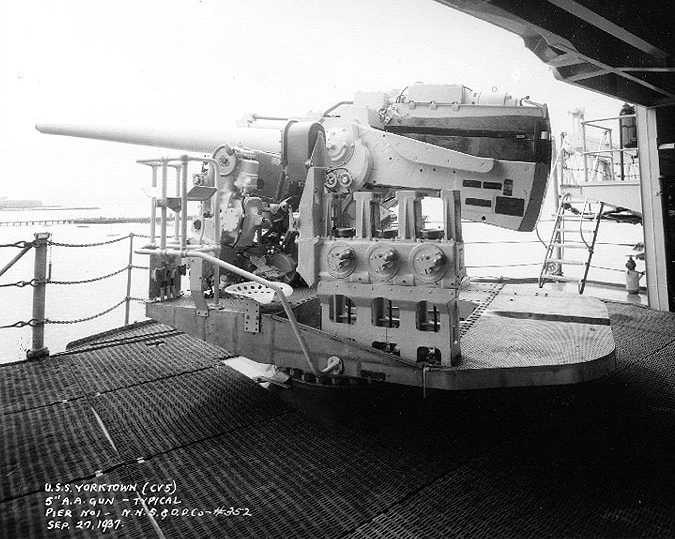
Note: This is the pedestal mount on USS Yorktown, showing notably on its side the Mechanical Fuze Setter Mark 7 mod 1.
These were the same standard duel purpose guns virtually present on all warships in any shape of form, single ones or dual turrets. In that case, they were more an afterthough to deal with surface targets due to their location: On the two poop sponsoned extensions, inwards, closer to the hangar. Meaning their arc of fire was blocked at high angled by the flight deck above.
This was an open air, unshielded pedestal mount, and so lacking integral hoists, so it’s rate of fire was about 12 – 15 rounds per minute.
The quantities of rounds is uncertain. According to navweaps, this was of the larger Yorktown and Essex 450 rounds so we can assume circa 400 rds or less per gun. In night operations they could also fire illumination rounds, that burn for approximately 50 seconds.
⚙ specifications Mark 12 gun |
|
| Shell | 20 × 110 mm RB. HE 123 g (4.3 oz), HE/T: 116 g (4.1 oz) |
| Muzzle velocity | 820 m/s (2,700 ft/s) |
| Rate of fire | 15 rpm max |
| Range | Effective 914 m (1,000 yd), max 45° 4,389 m (4,800 yd) |
| Elevation | -15/+85 degrees (30° train, 15° elevat./sec.) |
| Protection | Mod 0: 0.125 in (0.32 cm) |
| Crew | 9 |
24x 40 mm/56 Bofors Mark 1/2
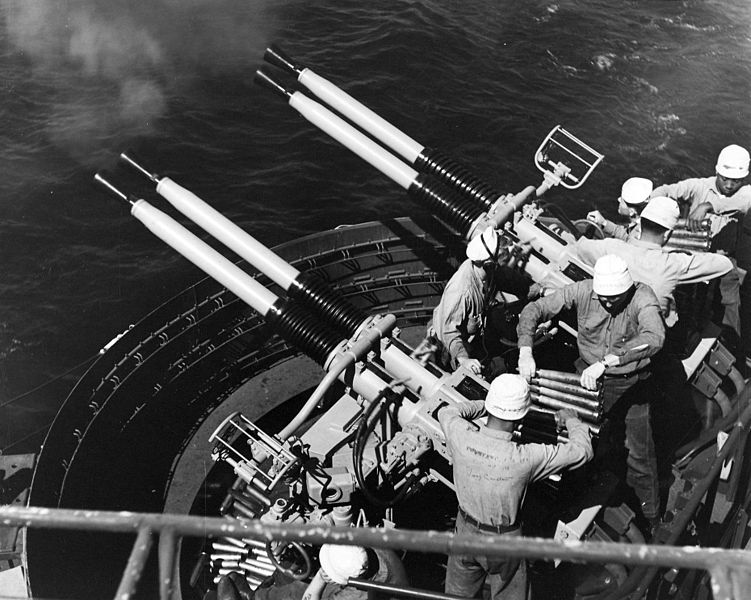
Quad mount for Mark 1.2 Bofors, here on USS Badsoen Strait during an exercize on CVE-116 Badoeng Strait, gunnery training in 1948. Two were located at the poop side by side, and one at the bow, total 12.
Mount: Mark 4 quad: Weight 22,795 – 24,553 lbs (10,340 – 11,137 kg), elevation -15/+90 (rate 55°/sec) train 50°/sec.
Crew: five men, gun commander, two gunners, two loaders. Recoil 7.9 in (20 cm)
RPM: 16-round bursts cycles, up to 120 rpm with a well-trained crew.
Round: 900 g (2.0 lb) HE 40×311R (rimmed) shell, 2,960 ft/s (900 m/s), penetration 4,000 yards (3,658 m): 0.60″ (15 mm)
Range: 7,200 m (23,600 ft), max practicable 3,800 m (12,500 ft), but max 22,800 feet (6,949 m) at 90°.
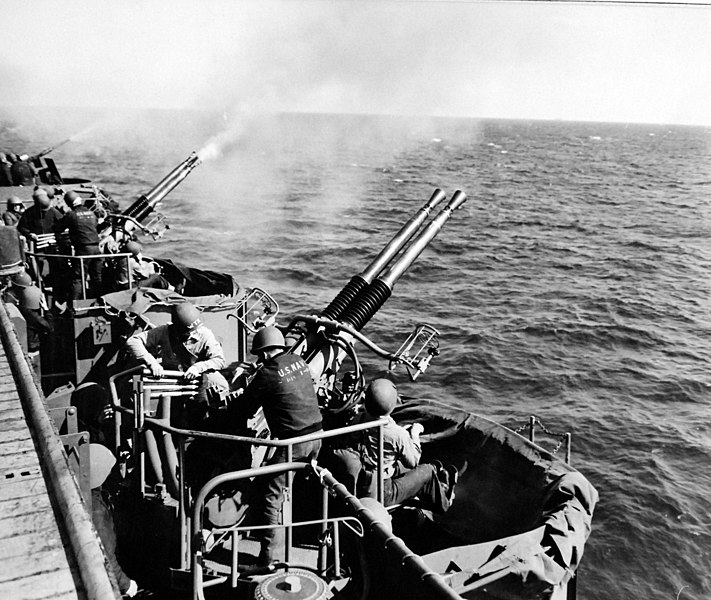
Twin mount Mark 1.2 (here on USS Hogatt Bay, VCE-75).
See also
20 mm Oerlikon Mark 4
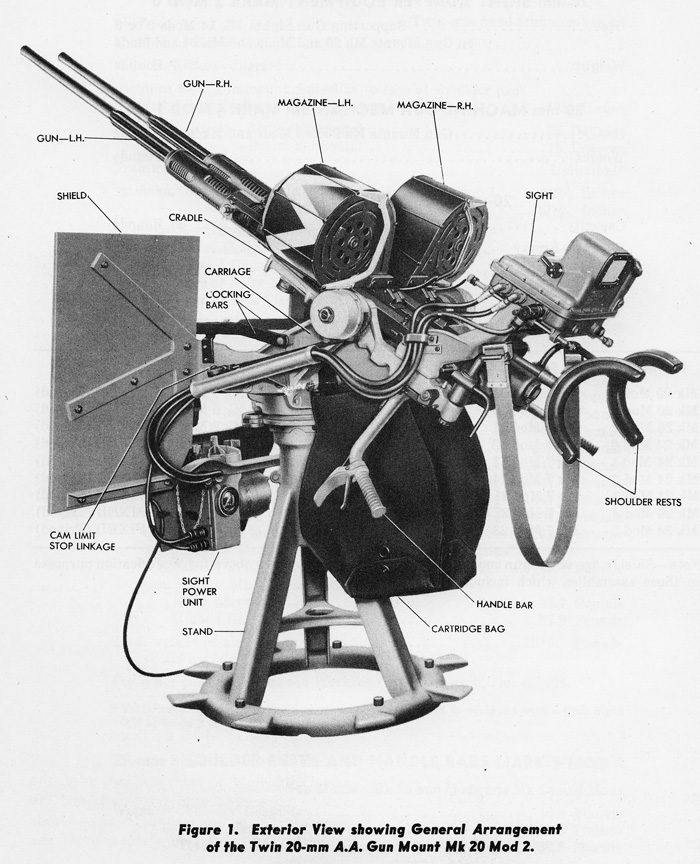
These simple pedestal single mounts were quite useful as they took less space and still could bring extra firepower, but the model was at its last leg as AA gun. In 1945, the danger of Kamikaze and fast incoming aircraft meant unassisted fire at close range required quite some marksmanship.
Sensors
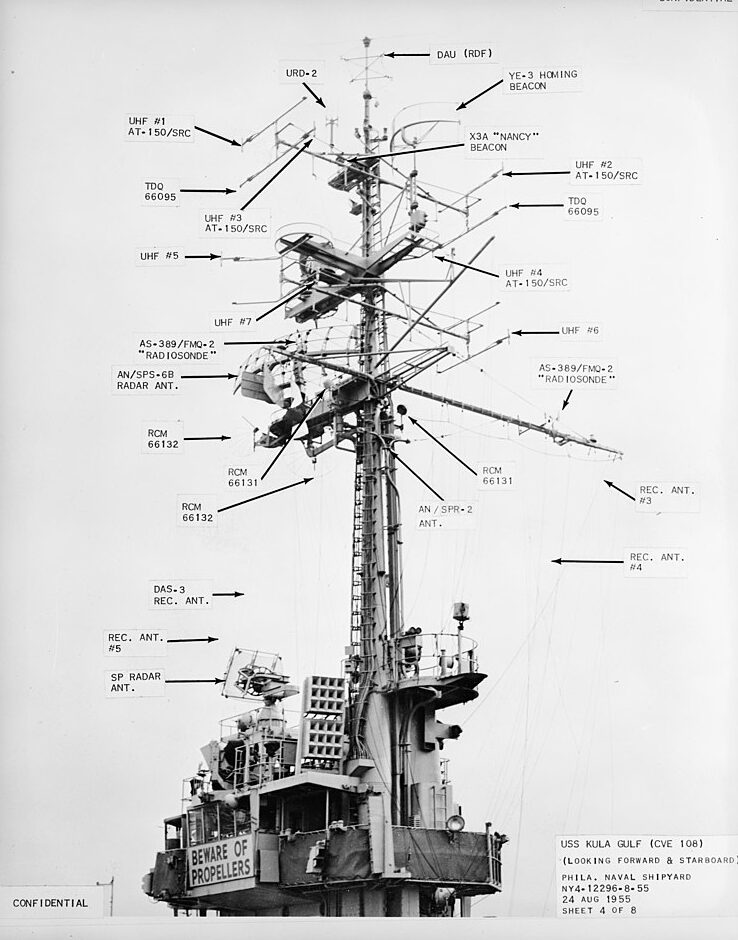
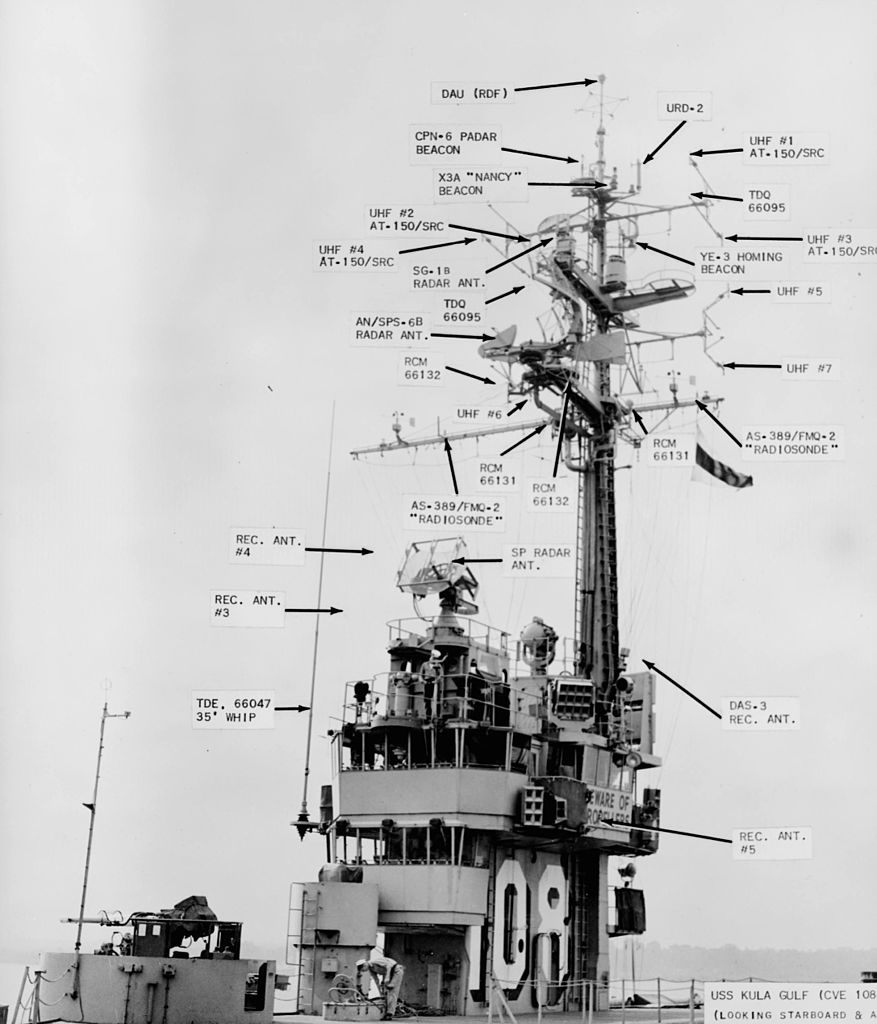
SK2 Air Search Radar:
The CXFA was an SC-2 with CXAM antenna which also provided IFF thanks to its added Bl-5 antenna atop. This long-wavelength seaborne radar had self-interfrenece issues with sea surface producing duds at some altitudes and sometimes contact with approaching aircraft was lost in a “null”. The Kamikaze campaign showed it in particular.
Specs: Power 200 kW weight 4900 lbs (2200 kg), Wavelength 1.5 m, pwdt 5 ms, PRF 60 Hz, 4.5 rpm Max Range 100 nm (190 km) bomber formations and 13 for destroyers.
square 6×6 dipole “mattress” array with plan position indicator (PPI) at three scales and “A” scope with three scales, accuracy 100 yards (90m)/1°; resolution 1800 ft(550m)/10°
SG Surface Radar:
Improvement over the SC (1942), standard on cruisers and destroyers in 1943, 50kW with 9 inches (23 cm) PPI display for 15,000 and 75,000 yard (13,700 and 69,000 m) range scales plus an “A” scan.
The fragility and accuracy, reliability of sets made it much more dependable in 1945. It also performed well for navigation and was equipped with antijamming.
Specs:
Weight 3000 lbs (1350 kg), Power 50 kW. 4, 8, 12 rpm, pwdt 2ms, Wlgt 10 cm, PRF 775/800/825 Hz
Range 15 nm(30 km) up to 22 for a battleship. 48-in x 15-in (122cm x 38cm) “frypan” cut parabola with 9-in (23cm) PPI scope, 5-in (13 cm) A scope
Accuracy 200 yds(180m)/2°, Resolution 400 yards(370m)/2-3°
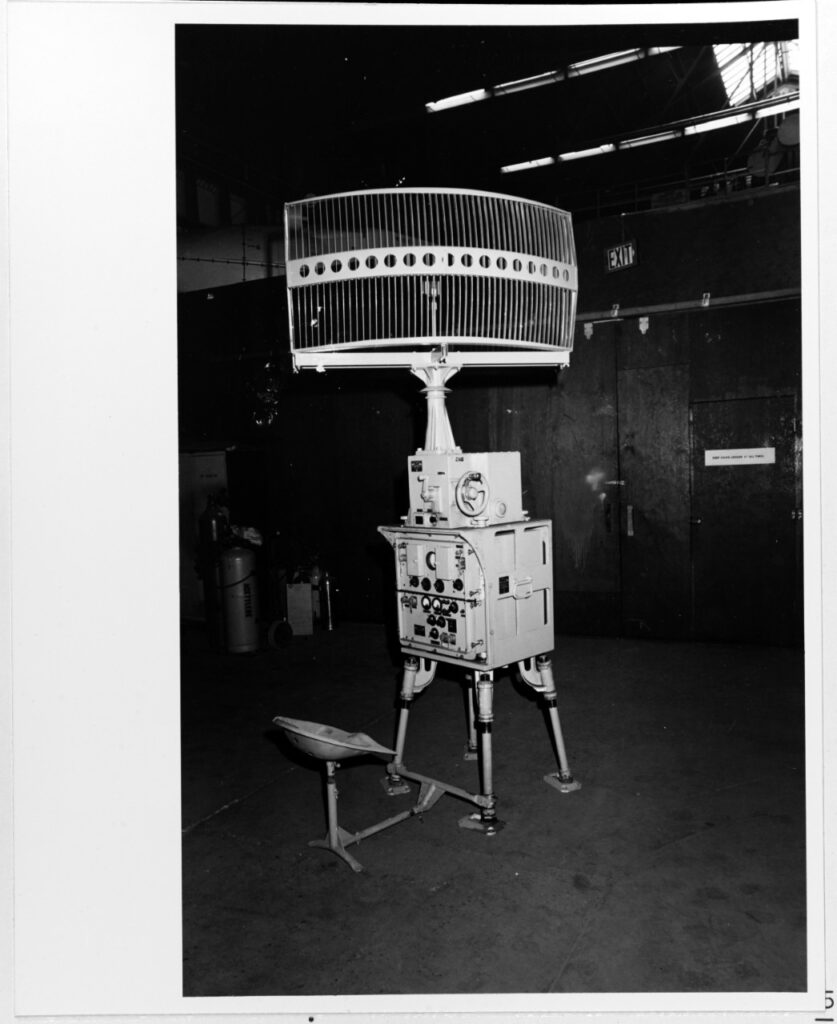
NH 89034 “SQ” Portable Search Radar. Equipment received from USS COMMENCEMENT BAY (CVE-105) in 1971. It was photographed at the Navy Memorial Museum, Washington Navy Yard, Washington, D.C., in 1978. This type of radar was used as a supplemental shipboard system during the later stages of World War II (navsource).
Upgrades
Ships completed by January 1946, kept their main guns, three quad 40 mm, twelve twin 40mm Mk 1, and swapped to single 20mm/70 Mk 10 (no augmentation) but they had two catapults.
During the Korea war, ships active received the SLR-2 ECM suite, and in the 1960s, the WLR-1, ULQ-6 ECM suite.
Facilities
Their flight deck measured 152.7 (500 ft) x 24.4 m (80 ft) for 3,726 m² (40,000 ft. sq.) in surface and the hangar was 1,382 m² (14,870 ft. sq.) in parking surface and 7,365 m³ (260,000 cu. ft.) in volume, while measuring 65.8 m (215 ft) x 21 m (68 ft) x 5.33 m (17.4 ft). Two similar size elevators (7.7 t capacity and 13.4 x 12.8 m or 44 x 42 ft) were located in the center line, the forward one abreast the island, and the second one aft about the same distance to the end of the deck.
There was one H2 catapult originally fitted on the port side of the forward elevator, offset in axis. A second H4C catapult was later installed in front of the froward lift. In total they also carried 700,000 liters (185,000 US gal.) of storage or 150,806 gallons (510,000 liters) aviation gasoline depending on sources. The pumping system was improved and on par with the Essex class, very safe, using seawater to replace spent gasoline and in the piping. The ships fitted in late 1945 received the latest in light landing help system, derived from British experience, so in theory they could operate Corsairs.
Air Group
1945 air group
Speaking of air group, there are many contradiction between sources. With 34 aircraft (nominal, still, they could not be stored all inside the hangar), they could operate on paper three squadrons, ideally two of fighters (a priority for kamikazes in 1945) and one of diver bombers or more commonly, torpedo bombers with the “usual suspects”: Hellcats and Avengers.
USS Commencement Bay as completed was qualified to fly the following:
-F4F Wildcat*, F4U Corsair, F6F Hellcat fighter-bombers
*likely the 1945 GM-2 variant
-SB2C Helldiver dive bombers
-TBF/TBM Avenger torpedo bombers
–SOC Seagull (land based version, never shown in photos), F4F-P Wildcat, F4U-P Corsair, F6F-P Hellcat for reconnaissance.

USS Block Island (here in ms 22 livery src) in the summer of 1945 for example operated 20 F4U-1D Corsair and F6F-5N Hellcats equipped with rockets (two sqn.) and nine TBM-3 Avenger for a strike. They too, were used with rockets but carried more bombs.
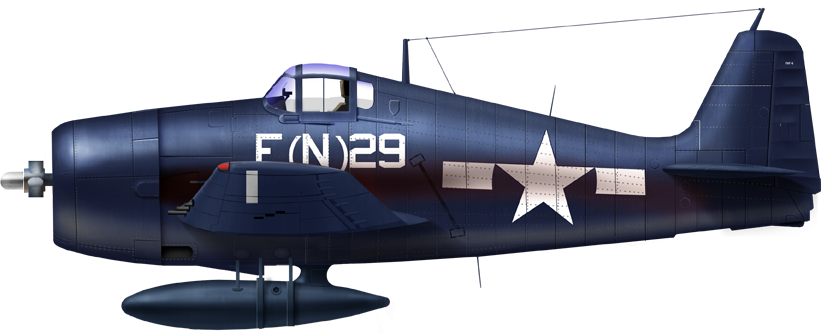
Grumman F6F-N VMF-511, USS Block Island, 1945
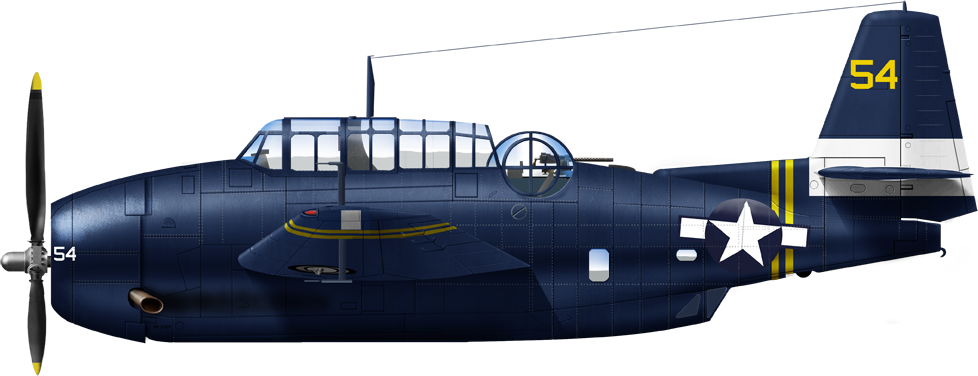
Grumman TBM-3E VMTB 135, USS Cape Gloucester 1945
Korean War era air group
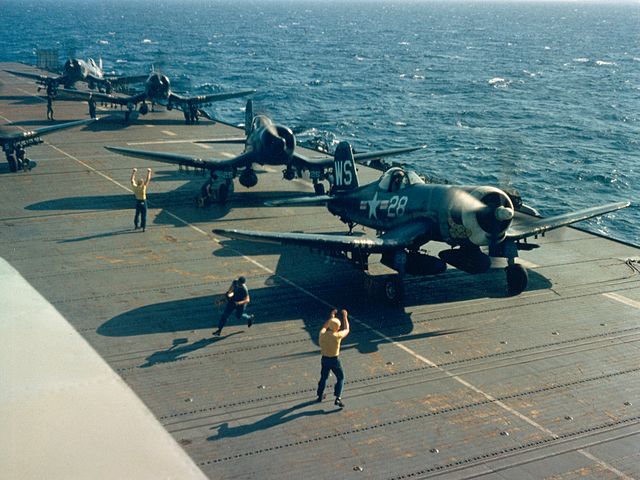
In late 1950 as the Korean war raged on, USS Sicily operated fifteen F4U-4B as well as ten TBM-3E/S*, and two Sikorsky HO3S-1 helicopters. They were qualified to operate the TBM-S ASW planes, TBM-W EW planes as well. Here, the F4U-4B were operated by Marine Attack Squadron 323 (VMA-323) from June 1952. 24 aircraft was split later with AU-1s. The “Death Rattlers” left Korea in July 1953 and had the longest overseas service during the Korean War, accumulating a total of 48,677 hours of flight time from August 1950 arrival, with 16 KIA and 4 POWs.
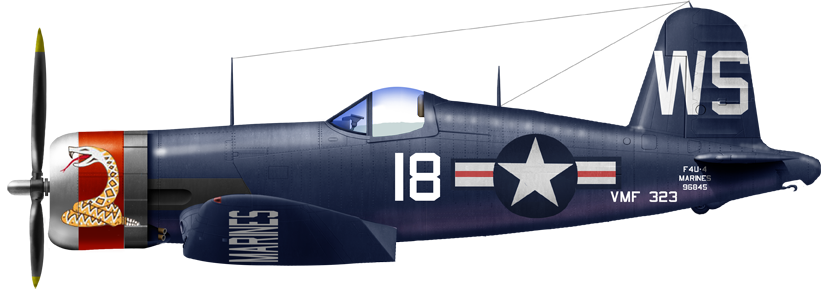
F4U-4 VMF 323 “Death Rattlers”, USS Sicily, Korea June 1951
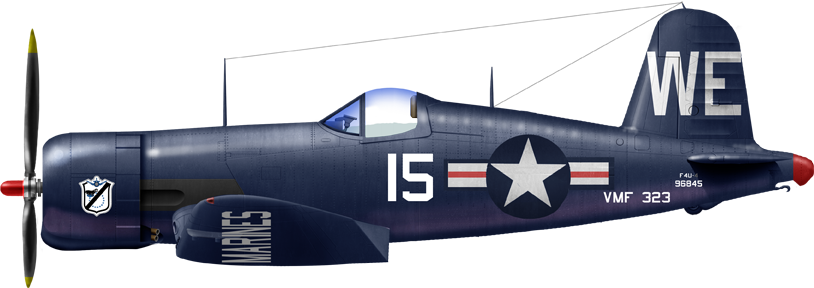
F4U-4b VMF 214 “black sheep”, USS Badoeng Strait, South Korea June 1951
*The TBM-3E/S had stronger airframe, search radar, ventral gun deleted and were converted and specialized for an ASW role.
Later in the war, on September 1952, USS Badoeng Strait operated between ten and fifteen Grumman Guardian AF-2S/W and 2 HO3S-1.
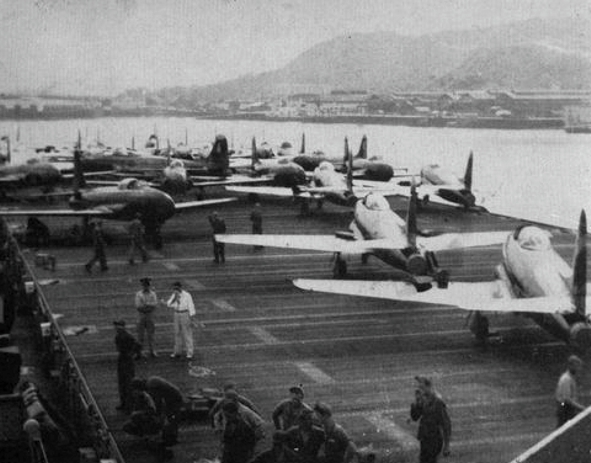
F-80s of the 36th Fighter Wing aboard USS Sicily August 1948
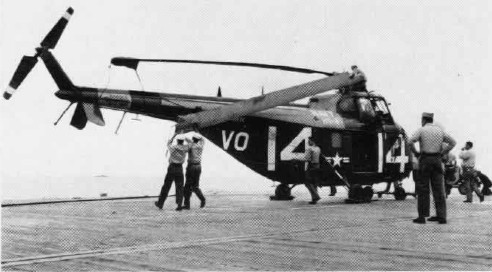
Sikorsky HO4S, HS-4 aboard USS Rendova 1954
Vietnam War era air group
This only concerned two ships: The reactivated USS Kula Gulf (AKV-8) and Point Cruz (AKV-19) were mostly used as aircraft/helicopter ferries.
⚙ Commencement Bay specifications |
|
| Displacement | 10,900 long tons standard, 24,100 long tons (24,500 t) full load |
| Dimensions | 557 x 75 x 30 ft 8 in (169.69 x 23 x 9.35m) |
| Propulsion | 2-shaft geared turbines, 4 boilers 16,000 shp |
| Speed | 19 knots (22 mph; 35 km/h) |
| Range | 10,000 nm/15 knots |
| Armament | 2× 5-in/38 guns, 3×4, 12×2 40 mm Bofors, 20× 20 mm Oerlikon AA |
| Protection | Compartimentation, double hull |
| Sensors | SG, SK-2 and SP radars |
| Air Group | 34 |
| Crew | 1,066 officers and rating including air group personal |
Appearance
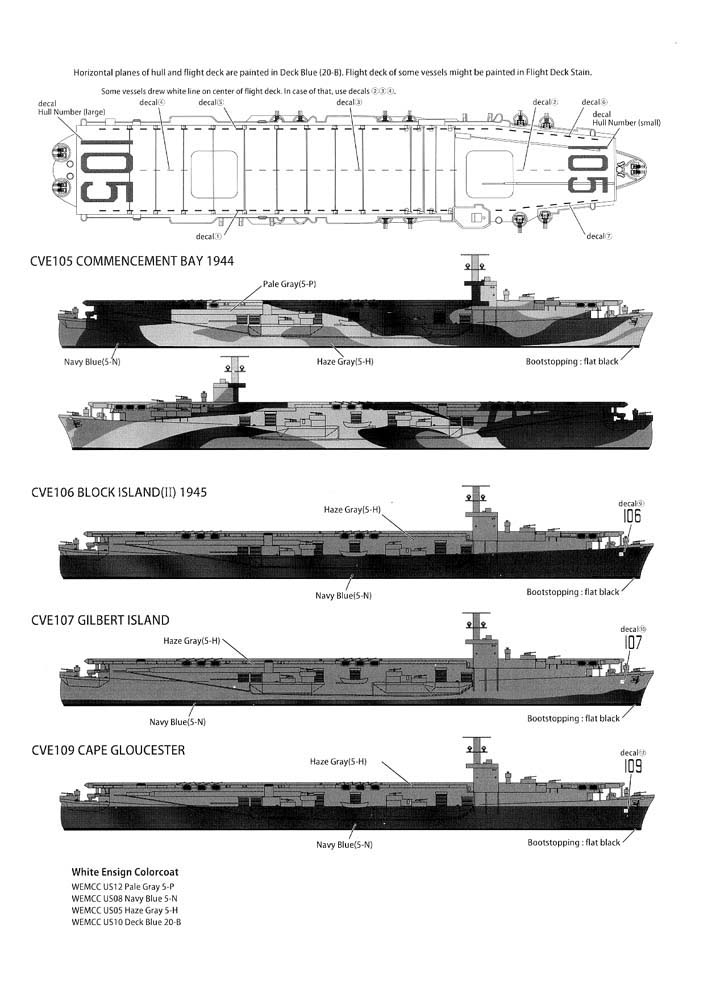
Appearance of various carriers, model kit. HD profiles to come soon.
Camouflage patterns used were the Darl navy blue for the flight deck, with white markings. A large identification number was painted black forward.
Side surfaces could vary between ships, but adopted the late 1944 pattern used at the time, three-tone with Navy Blue, Pale (almost white) and Haze navy gray (which was light blue-grey), wavy patterns (1) or to be precise, Deck Blue, 20-B, Ocean Gray 5-O. CVE 105 Commencement Bay N/A was painted with the MS 32/16a (and in 1945 MS 21) whereas CVE 106 USS Block Island received a variant called Measure 33, design 18a, and kept it until the end of the war.
CVE 107 USS Gilbert Islands was painted with the MS 32 design 11a.
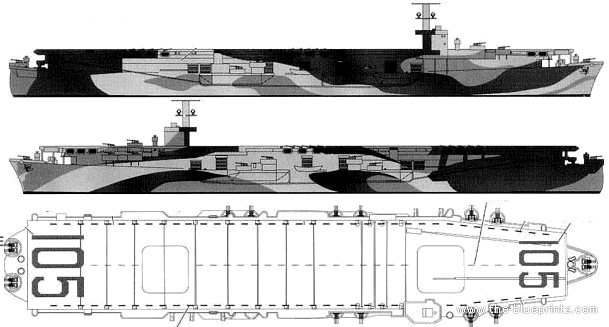
By 1945 the new standard was Ms21, with half the hull (upper) in haze gray and lower half on dark navy blue. Patterns would vary between a straight line, which was the most common (4), slanted line forward (2) or a radical low line with semi-wavy motives forward (3) only found on USS Gilbert Island. MS 21 was applied to all but the first two ships.
Kula Gulf, Cape Gloucester received the MS 22 as well as most ships completed post-1945, Navy Blue 5-N All Vertical surfaces without exception.
CVE 112 Siboney received the MS 12 in 1945 and CVE 115 USS Bairoko received the MS 32, design 16a like the led ship according to shipcamouflage.com
General Assessment of the class
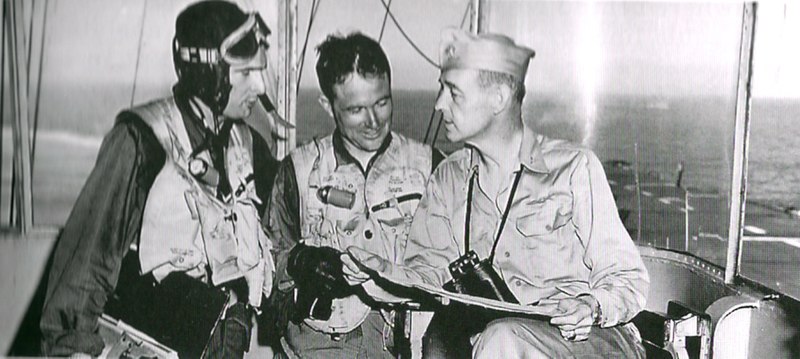
Capt. John S. Thach USS Sicily CVE-118: The Commanding officer of Sicily, discusses a mission with two United States Marine Corps pilots from his ship while aboard Sicily off the Korean Peninsula during the Korean War.
According to Friedman, the Commencement Bays were the culmination of US CVE design, the best of what couild be built with wartime experience. They had well done and better separated machinery spaces for machinery and better management of compartimentatioin below the waterline, faster elevators, strengthened flight deck (from 14,000 to 17,000 lbs), as well as a much improved AA battery, and an enlarged, more practical island. Cargo oil and pumps were replaced by seawater ballast for safety and a large size meant also improved crew spaces. They were more popular with theior crews and compared to the Sangamons in general had better subdivision of internal space around and below the hand, more rational. The main and hangar decks were also strength decks, continuous rather than interrupted.
Due to their delayed construction, they entered service late, with USS Commencement Bay only launched on 9 May 1944, comp. Nov. 1944, to which followed the usual sea trials, post-fixes, shakedown cruise and weapons qualifications, fleet training before even joining the Pacific in mid-1945. so most of the thirty-five ordered entered service in late 1945 of months after the end of the war, and the remainder were cancelled prior to completion, based on their advancement as surplus to requirement. 19 on this total, so barely half, were commissioned, with four broken on slipway, two accepted from the builders but never commissioned, remainder cancelled before being laid down.
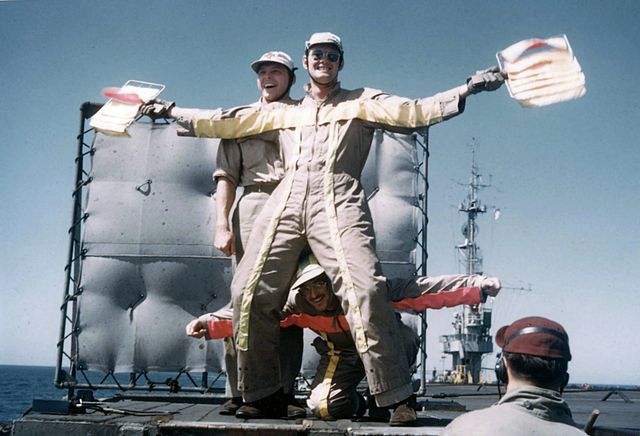
LSOs kidding around aboard USS Sicily CVE-118 off Korea 1951
Now as carriers, they took longer to built than the Casablanca class, one or two months more in average, and nominally carried up to 34 aircraft nominally versus 32 or 26 in best conditions on the Sangamons and 27 (again ideal max) on the Casablancas. If the number was still way less than an Essex, and nominally as much as an Independendance class (34), not all this “air group” was an immediately operational asset: Many of these planes were spares, crated or in stored parts in a workshop. They could not be accessible before many work hours and were only envisioned as spares for expected losses, both for attrition (landing accidents) and enemy fire.
Tactically, these ships were to be assigned the same tasks as the Casablanca class ships: Escort supply convoys in service to TF 38/58 or those across the Atlantic (at least when planned in 1943), and assist and support landing fleets during assaults. Their speed was not an advantage in 1944 as axis submarines were now almost nullified as a threat, and they could not serve with the fleet (19 was far from 33 knots), but some argued they could provide better CAPs, a bit like the Independences. In fact only seven vessels arrived on time to do any part in the Pacific:
Commencement Bay, Block Island, Gilbert Islands, Cape Gloucester, Vella Gulf, Kula Gulf and Salerno Bay, completed by May 1945, arrived in July.
The remained were completed but had a more cushy, lenghty completion, trials and training program, as there was no emergency.
The Korean war saw CVEs of the Commencement Bay class received an helicopter air wing in support of the LPH (fleet carrier, amphibious force) and too,k part in various operations, gaining several battle stars.
On 12 June 1955, the 7 inactive Commencement Bay-class were reclassified CVHE. By 7 May 1959, all surviving Commencement Bay-class ships (plus four Bogue-class CVUs) were redesignated as “AKV so cargo ship and aircraft ferry. Later there were schemes to adap the SCB-176 design FY1958 program and convert a single Commencement Bay-class ship as tender for the new jet-powered P6M Seamaster seaplanes. But the Seamaster and tender conversion programs ran into budget overruns and delays, and shifting priorities went to the Polaris missile system, so this CVE conversion project was dropped.
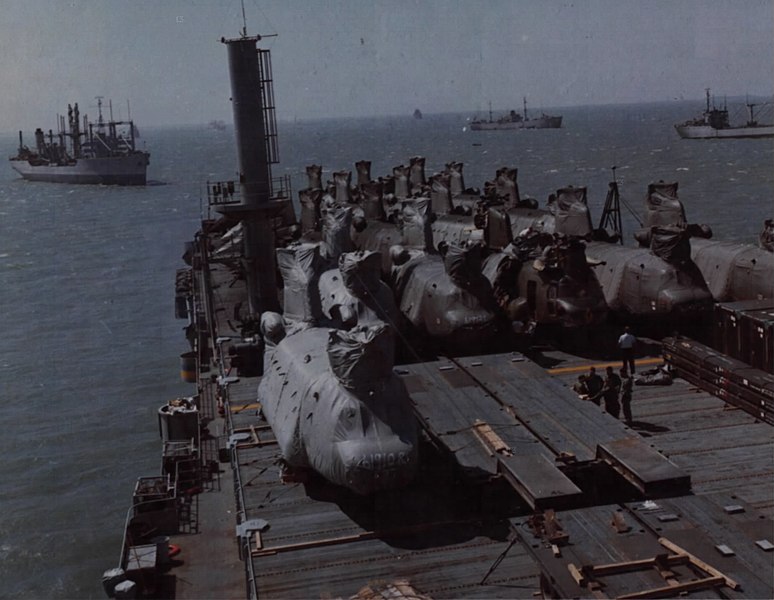
CH47s on USS Point Cruz, Vietnam, Feb.1968
In 1961 plans to converted remaining Bay class as helicopter carriers (LPH) were dropped as better propositions existed.
By the time the Vietnam war erupted, most were back in mothballs. However Kula Gulf became AKV-8 and the Point Cruz AKV-19, both taking part in various operations as aicraft ferry mostly. Meaning they never really were placed in harm’s way given their area of operation and use.
The conversion into USS Annapolis (ex USS Gilbert Island)

Profile of USS Annapolis in 1965 (navypedia).
In 1962-1964, USS Gilbert Island was taken over for a radical conversion over two years at New York N Yd, Brooklyn, as a communications relay ship. She as renamed AGMR1 Annapolis. As completed, her displacement jumped to 11,473/22,500 tons, crew was down to 710 men, armament credited to just four twin 3-in(76mm)/50 Mk 33 mountings, only efficient AA at the time.
Gallery
Read More/Src
Books
Bauer, K. Jack; Roberts, Stephen S. (1991). Register of Ships of the U.S. Navy, 1775-1990: Major Combatants. Greenwood Press
Silverstone, Paul H. (1965). US Warships of World War 2. USA: Naval Institute Press.
Friedman, Norman (1983). U.S. Aircraft Carriers: An Illustrated Design History. Annapolis, Maryland
U.S. Aircraft Carriers: An Illustrated Design History, Norman Friedman Naval Institute Press, 1983
J. Gardiner conway’s all the world’s fighting ships 1947-95
Links
USS-Commencement-Bay-CVE-105 pdf scribd
https://www.navsource.org/archives/03/105.htm
http://www.hazegray.org/danfs/carriers/cve108.txt
http://www.navsource.org/archives/03/108.htm
http://www.navsource.org/archives/03/110.htm
http://www.navsource.org/archives/03/112.htm
http://www.navsource.org/archives/03/113.htm
https://www.globalsecurity.org/military/systems/ship/cve-105.htm
navsource.org/ builders trials, USS Rendova
http://www.microworks.net/pacific/ships/carriers/commencement_bay.htm
https://www.secretprojects.co.uk/threads/jumboised-cimarron-commencement-bay-carriers.41165/
https://www.secretprojects.co.uk/threads/commencement-bay-class-conversion-seaplane-tender-mid-1950s.7257/
https://www.history.navy.mil/research/histories/ship-histories/danfs/c/commencement-bay.html
https://en.wikipedia.org/wiki/Commencement_Bay-class_escort_carrier
https://www.navysite.de/cve/cve105.htm
http://www.wings-aviation.ch/22-USNavy-Carrier/Escort-Carrier/105/USS-Commencement-Bay.htm
https://www.battleships-cruisers.co.uk/commencement.htm
https://www.ibiblio.org/hyperwar/USN/ships/CVE/CVE-105_CommencementBay.html
http://pwencycl.kgbudge.com/C/o/Commencement_Bay_class.htm
https://reviews.ipmsusa.org/review/us-navy-escort-carriers-1942-45
https://uboat.net/allies/warships/ship/2416.html
https://www.usni.org/magazines/naval-history-magazine/1994/december/part-i-matter-class
http://pacific.valka.cz/classes/combay.htm
https://laststandonzombieisland.com/tag/commencement-bay-class-escort-carrier/
https://premium.globalsecurity.org/military/systems/ship/cve-105.htm
https://www.usni.org/magazines/naval-history-magazine/1994/december/part-i-matter-class
https://www.facebook.com/photo.php?fbid=513347973926132&id=100057528006674&set=a.269115125016086
https://usspointcruzcve119.tripod.com/index.html
Model Kits
Kit review on modelwarships.com, Pit Road 1:700, CVE 107
sdmodelmakers.com
https://www.scalemates.com/topics/topic.php?id=156299
 Commencement Bay (ex-St. Joseph Bay) CVE-105
Commencement Bay (ex-St. Joseph Bay) CVE-105
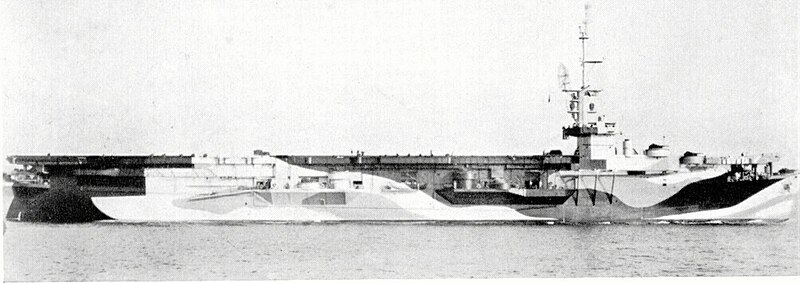
USS Commencement Bay was laid down on 23 September 1943, launched on 9 May 1944 and completed on 27 November 1944, so one year and two month, twice as much as expected initially. But this was not a conversion, a full-built, which in additon got lower priority. She made her sea trials and initial shakedown on the west coast, weapons qualifications, and reported at Seattle on 1st February 1945 to start her service as training ship in Puget Sound, until 2 October 1945, for the other carriers of her class to come. She completely missed the Pacific campaign, and trained instead 545 officers and 5,053 men during the precommission of sister escort carriers, also qualified 249 pilots (8 air groups) for takeoffs and landings.
At last she was sent to the Pacific at last, but the war ended a month ago, Operation Downfall planned in early 1946 had been cancelled and instead, occupation duties and POWs repatriation (Magic Carpet) was now the order of the day. She sailed from Bremerton on 21 October to Pearl Harbor, arriving on 4 November, and again, started training personal, make carrier qualifications, until 27 November when she came back to Seattle and Tacoma for a short refit.
She visited Los Angeles, San Pedro, and was back to Tacoma 28 January, decommissioned, placed in reserve on 30 November 1946. Re-classified CVHE-105 on 12 June 1955, AKV-37 on 7 May 1959 she never left her mothball and was untimately stricken from the lists on 1 April 1971, and sold for BU on 25 August 1972. Her career was just two years, and she was awarded only the ww2 general campaign medal. Fortunately other sisters were much more active.
 Block Island (ex-Sunset Bay) CVE-106
Block Island (ex-Sunset Bay) CVE-106
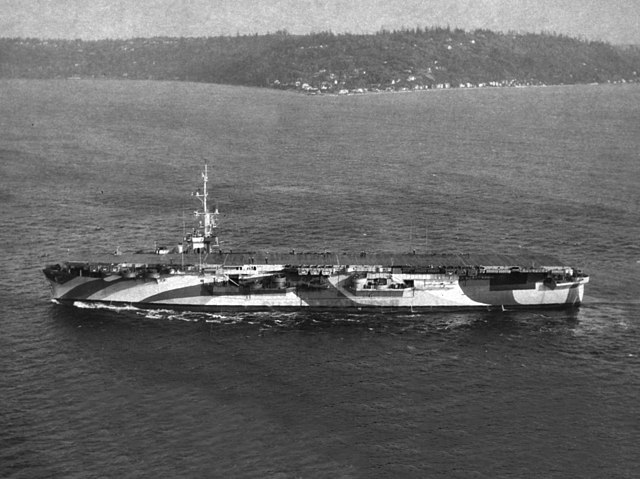
Her sister Block Island was launched on 10 June 1944, completed on 30 December 1944 at Sunset Bay, Todd-Pacific Shipyards in Tacoma like all her sisters. During the launching ceremony, she was sponsored by Mrs. E. J. (Grace) Hallenbeck, the mother of Major “Pappy” Boyington, a POW of the Japanese at the time. His squadron “black sheep” would serve aboard. After intial training and trials for three months, she sailed for Pearl Harbor on 20 March 1945. There, she training for combat operations for the impending invasion of Okinawa. On 17 April she sailed to Ulithi FOB and started Flight operations on 3 May-16 June before heading for Leyte, San Pedro Bay, and she took the Straits of Makassar for Borneo. 26 June-6 July saw her assisting with the Balikpapan operation. Next she was in Guam learning of V-Day on 15 August.
6–9 September saw her evacuating POWs from Formosa (Taiwan), and patrolling the Far East until 14 October, departing back to San Diego, 11 December 1945. On 6 January 1946 she was assigned to the Atlantic fleet, crossed the Panama Canal, was assigned to Norfolk reserve, 28 May 1946.
On 29 May 1946, she was towed, reactivated, to Annapolis, and placed under supervision of the Naval Academy, used as a training ship for midshipmen until 3 October 1950, and returned to the Atlantic Reserve Fleet. With the war in Korea, she was fully recommissioned on 28 April 1951 but would not beeing sent there. Instead between June 1951 and November 1953 she trained off the Virginia Capes, with yearly winter cruises to the Caribbean but also crossed the Atlantic and trained with NATO, UK, France, and visited Italy 17 April–26 June 1953.
By 15 January 1954, she was replaced in commissioned reserve at Philadelphia, then decom. 27 August 1954. In 1957–1958, she became “LPH-1” with the intention to convert her under SCB 159 as an amphibious assault ship, a program later canceled. She was eventually stricken on 1 July 1959 (6 years service).
 Gilbert Islands (ex-St. Andrews Bay) CVE-107
Gilbert Islands (ex-St. Andrews Bay) CVE-107
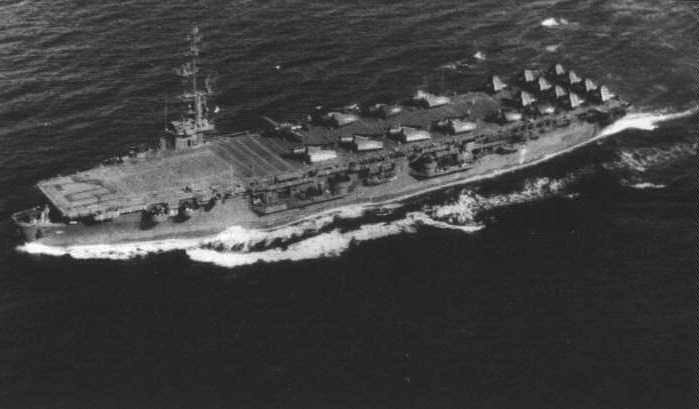
USS Gilbert Island was laid down at Tacoma on 29 November 1943, launched 20 July 1944 and completed, commissioned on 5 February 1945 with Captain L. K. Rice in command.
After shakedown training in southern waters, she left San Diego on 12 April 1945 for Hawaii and trained intensively for the Okinaway operation, she sailed there on 2 May with an escort carrier force and arrived on the 21th. She used her air group for strikes on Okinawa on 24-31 May, her Hellcats and Avengers blasting many objectives bombs and rocket attacks. Four Marine pilots, three TBM Avenger gunners were KiA during these operations. She departed Okinawa on 16 June for supplies at San Pedro Bay, and was ordered to sail to Balikpapan, Borneo, cover an ustralian assault on 1 Julyand providing close support until the island was secured, then she sailed for Leyte on 6 July for supplies and R&R.
She left San Pedro Bay on 29 July to escort a logistic convoy to the 3rd Fleet during its last air strike campaign over Japan in the summer, and learned about V-Day on 15 August. The megaphone were turned out to relay Admiral Halsey’s words while the whole crew was on deck: “Apparently the war is over and you are ordered to cease firing; so, if you see any Jap planes in the air, you will just have to shoot them down in a friendly manner.”
She supplied at Okinawa, and on 14 October took part in a show of force, covering the occupation of Formosa (Taiwan) by the Chinese nationalist 70th Army. The she headed for Saipan and reached Pearl Harbor, then sailed back to San Diego on 4 December 1945. On 21 January 1946, she crossed the Panama Canal and sailed to Norfolk, decommissioned on 21 May 1946, Atlantic fleet reserve.
She was towed later to Philadelphia by November 1949, fully recommissioned on 7 September 1951, sent in drydock in Boston NyD by 25 November for overhaul. She was reassigned to the Atlantic Fleet on 1 August 1952, and ferried jets to Yokohama, Japan for the campaign in Korea. She arrived on 18 September, and was back to her new homeport of Quonset Point, Rhode Island by 22 October. On 5 January 1953 she trained in the Caribbean, and stayed off New England for more exercises until the end of the year, also visiting Halifax, having afterwards a new overhaul at Boston. On 5 January 1954 she sailed across the Atlantic for a first Mediterranean cruise and back to Quonset Point, 12 March 1954. Later this year she saw the first jets qualifications on the class, with those making touch-and-go landings on 9 June 1954. On the 25th, she sailed for Boston, decommissioned on 15 January 1955.
Reclassified AKV-39 (ferry/supplu carrier) on 7 May 1959, she still stayed in reserve, was stricken on June 1961 but reclassified AGMR-1 and by 1 June 1963, now renamed USS Annapolis (AGMR-1) 21 days later, she was taken in hands for a complete reconstruction as communication relay ship, recommissioned on 7 March 1964 under Captain John J. Rowan. This was the very first USN dedicated first major communication relay ship, intended for Pacific Operations. After acceptance trials and training she started missions with Operations Teamwork and Steel Pike before final acceptance, 16 December. She was soon sent to Vietnam for a second carrer.
After training off Norfolk until mid-1965, she sailed for Long Beach, on 28 June and then by September, sailed for Vietnam, the south China sea. In 1966 she took her post, making the first USN ship-to-shore satellite radio message, between Annapolis and the Fleet HQ at Pearl Harbor. She had some R&R in Hong Kong or Taiwan, or the Philippines, with local training in betwee, but stayed on station in 1967, and went home in 1968, was mothballed and ebventually decommissioned on 20 December 1969 at Norfolk, Pacific Reserve Fleet, towed to Philadelphia NyD mothballs. She was stricken on 15 October 1976, sold 1 November 1979. For her Vietnam service she won 7 campaign stars, none of her sisters was awarded as much and for this campaign.
 Kula Gulf (ex-Vermillion Bay) CVE-108
Kula Gulf (ex-Vermillion Bay) CVE-108
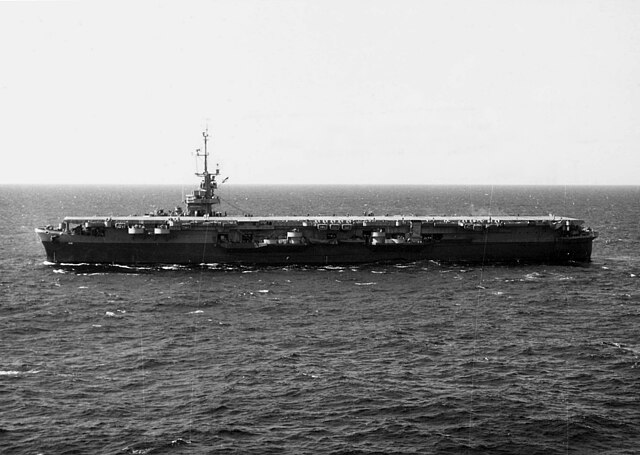
USS Vermillion Bay was laid down at Tacoma on 16 December 1943, launched 15 August 1944, then completed by Willamette Iron & Steel Corp. in Portland, commissioned on 12 May 1945 under Captain J. W. King. She performed her trials, shakedown, weapons qualifications, pilot qualification for her three squadrons, then started night carrier training until leaving San Diego on 5 August 1945 to join the 7th Fleet via Pearl Harbor and the Marshalls, learning about the Japanese surrender in between. While in Leyte Gulf on 14 September, she patrolled the East China Sea, off Okinawa, carrying land planes between Saipan and Guam and took part in “Magic-Carpet” from Guam on 17 November with 600 veterans to San Francisco (4 December=. Until 10 January 1946 she was back to the Pacfic to take another 1,520 vets at Tientsin, Tsingtao (China) for San Diego, 26 January. She transited to the East Coast 26 February, Norfolk (16 March) to be decommissioned at Boston on 3 July, Atlantic Reserve Fleet.
With the start of the Korean war, USS Kula Gulf recommissioned at Boston, 15 February 1951, under Captain Alden D. Schwarz, proceeded to sea trials, shakedown off Cuba, and preps in Norfolk, sailing out on 6 August with a cargo of airplanes to Casablanca in French Morocco, purchased by the French for the Indochina Operations. Back to Norfolk on 1 September she stayed for more than a year training helicopter pilots and ASW or fighter squadrons for new units deployed in Korea. May 1952 saw her training with Marine helicopters on Vieques Island in Puerto Rico. By October, she operated as ASW screen with transports to Labrador. She had a modernization overhaul in January–July 1953 and returned to ASW training.
Until 1955, helped perfecting ASW tactics with realistic training with other US submarines on the Atlantic Fleet. As reported later she pioneers some effective antisubmarine warfare tactics and helped greatly ASW helicopter warfare tactics. Indeed Soviet navy sub activities off South Vietnam were worringly ramping up. USS Kula Gulf also pioneered techniques of Marine “vertical assault” exercises at Vieques Island (February-April 1955), techniques that inspired the USN to convert many carriers as assault helicopter carriers. Back to Norfolk on 26 April, then Boston NyD, 13 May she had her inactivation in Philadelphia on 19 August, was decommissioned on 15 December 1955; Atlantic Reserve Fleet, then reclassified AKV-8, 7 May 1959.
With the Vietnam war, USS Kula Gulf was reactivated and transferred to Military Sealift Command on 30 June 1965 and became aircraft ferry. The summer saw her carrying helicopters and troops (1st Cavalry Division) to Vietnam, and shuttled other aircraft fropm the West Coast ports to various bases in South Vietnam until late 1967 and early 1968. She was then recalled home, and decommissioned on 6 October 1969, stricken 15 September 1970, sold 1971. No awards.
 Cape Gloucester (ex-Willapa Bay) CVE-109
Cape Gloucester (ex-Willapa Bay) CVE-109
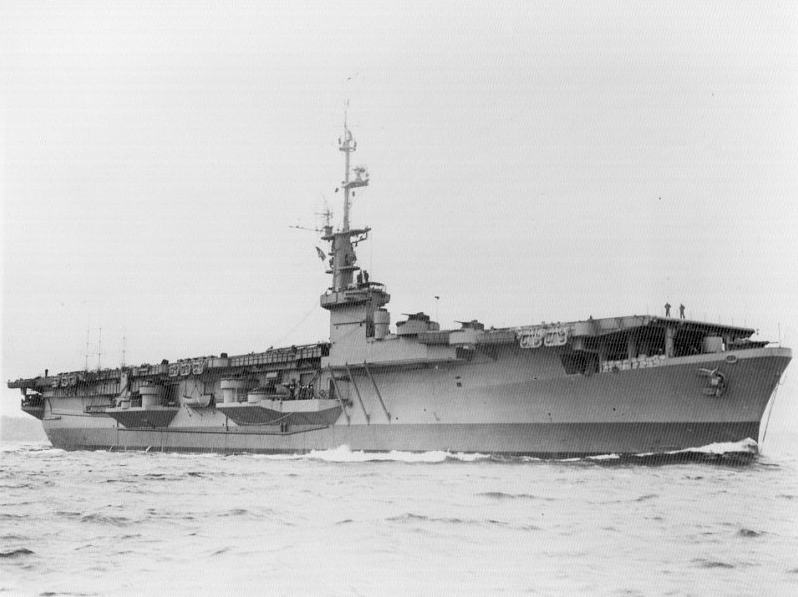
USS Willapa Bay was laid down on 10 January 1944 at Tacoma, launched (renamed Cape Gloucester) on 12 September 1944 and commissioned on 5 March 1945, under command of Captain J. W. Harris, assigned to the Pacific Fleet. She trained at Pearl Harbor and sailed to Leyte, on 29 June 1945, joining the 3rd Fleet. She provided, mich like Independence class carriers, the bulk of the combat air patrol to repel frequent kamikazes attack in her sector, east of Okinawa on 5–17 July. She covered the air raids later this months an in August and also provided recon, launching photographic reconnaissance missions, spotting shipping and airfields along the China coast, until 7 August. Her CAP constituted a tally and some badly damaged a 700-ton cargo.
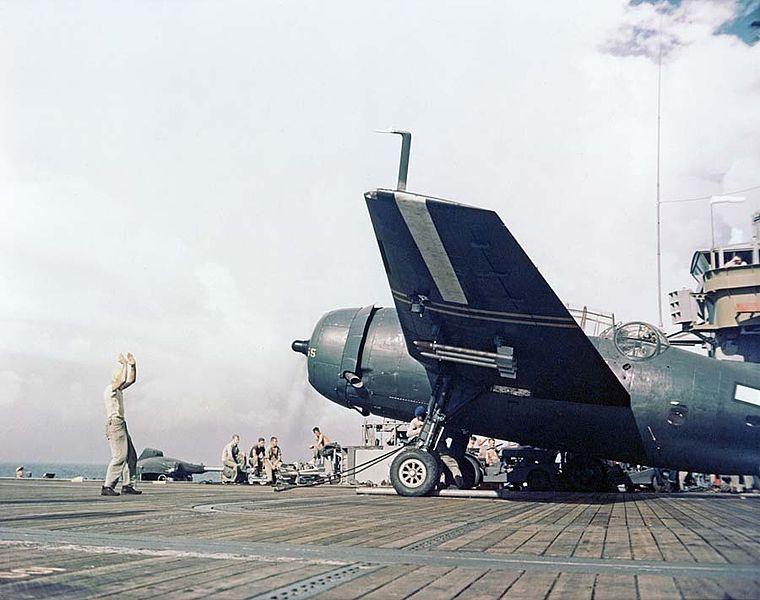
After the formal surrender on 2 September 1945, USS Cape Gloucester entered Nagasaki, to take aboard POWs for a first run of “Magic Carpet” and return them to Australia, New Zealand, UK, the Dutch east Indies, and US ones, mostly freed from camps on Kyūshū. She sailed to Okinawa to unload allied POWs, making four voyages to Pearl Harbor and the west coast. She was at last back in Tacoma on 22 May 1946 to be inactivated and decommissioned, Pacific reserve on 5 November, later reclassified CVHE-109 (12 June 1955) the AKV-9 (7 May 1959). Her actions earned her a single battle star for this service. Eventually, she never was reactivated, and was stricken in 1970 and sold for BU.
 Salerno Bay (ex-Winjah Bay) CVE-110
Salerno Bay (ex-Winjah Bay) CVE-110
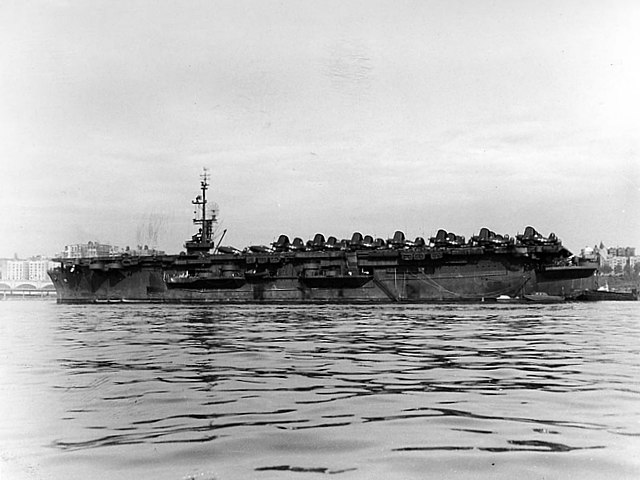
Laid down on 7 February 1944, launched on 19 October 1944 USS Salerno Bay was completed on 29 September 1944, but only commissioned on 19 May 1945 under Captain W. C. Holt.
As the 6th Commencement Bay-class escort carrier, she had improvements (delaying her commission) thanks to ealry combat action report on the class. She embarked and trained her first air group, MCVEG-5 in June-july, notably having aboard Marine Fighter Squadron 514 (VMF-514), Marine Torpedo Bombing Squadron 144 (VMSB-144). After this traininhg off California she was informed of the 15 August capitulation before sailing with Composite Squadron 68 to ferry them, while making more training operations, night qualification off Hawaii. On 21 September she was at last in Buckner Bay, Okinawa and was relocated to Hagushi anchorage, but left October to escape a typhoon. On 12-14 October she was back to cover the occupation of Formosa (Taiwan) by Chinese troops and moved to Saipan. She remained there for three weeks, was detached from the 7th Fleet and moved to Guam to start her Magic Carpet repatriations with vets to Pearl Harbor and San Diego. Mid-December saw her trainiting the Panama Canal Zone to Norfolk and assignation to the Atlantic Fleet.
There, she spent months to qualify new carrier pilots, on the eastern seaboard and Caribbean in 1946-1947. She was later inactivated by June in Boston, decommissed, mothballed on 4 October, but recommissioned on 20 June 1951 to takje part in Korean Operations. After her shakedown training by October she started training with the Carrier Division 18 until the end of the year. Back to Norfolk she was prepared for more operations, departed on 7 January 1952 for the Caribbean, then Norfolk, Puerto Rico, Virginia Capes, Carolina until the summer and a first European deployment. She left Norfolk HP on 26 August to join TF 173 and NATO exercises off Norway. This winter saw her transiting via Gibraltar to the Mediterranean and 6th Fleet operations. November saw her recrossing the Med and Atlantic on 7 December, to Norfolk for local exercises into 1953.
With a truce signed in Korea she was inactivated by 8 June in Boston, decommissioned on 16 February 1954. Reclassified AKV-10 in 1959, she was stricken on 1 June 1961, sold for BU on 30 October.
 Vella Gulf (ex-Totem Bay) CVE-111
Vella Gulf (ex-Totem Bay) CVE-111
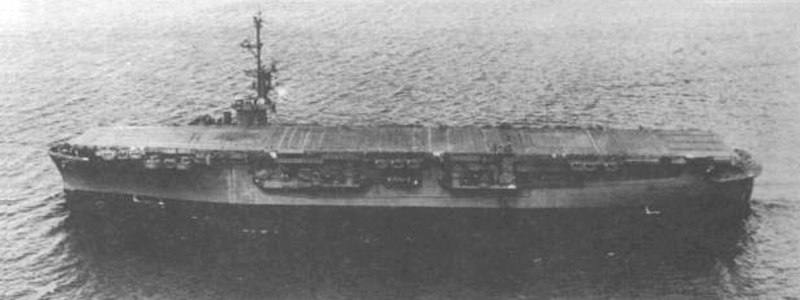
USS Totemm Bay was laid down on 7 March 1944 and renamed, then launched on 19 October 1944 and commissioned on 9 April 1945 with Captain Robert W. Morse in command.
After the usual preparation routine, post-trials training, she was homeported to San Diego, reached on 4 May and receiving her assigned Marine air group at the local NAS, then sailind out for qualifications and shakedown off California and received the rest of her group, followed by post-shakedown availability and sailing on 17 June for Pearl Harbor. Se commenced local training here on 25 June for 11 days as she was expected to joi the fight off the Japanese home Islands. In fact she was probably the last of her class to see action in WW2.
She departed on 9 July, via Eniwetok on the 16rh to refuel, and arrived to Guam and departed on the 23th for the Marianas and air strikes against Rota and Pagan Islands; notably 24 sorties against Pagan Island with F4U Corsairs informed by a F6F Hellcat photographic variant, and a second strike with her Grumman TBM Avenger bombers. The next day she launched 21 sorties against Rota (12 Corsairs, 8 Avengers, 1 photo Hellcat), which were targeted by light Japanese AA but two had taile surfaces damaged by shpanle from their own bombs.
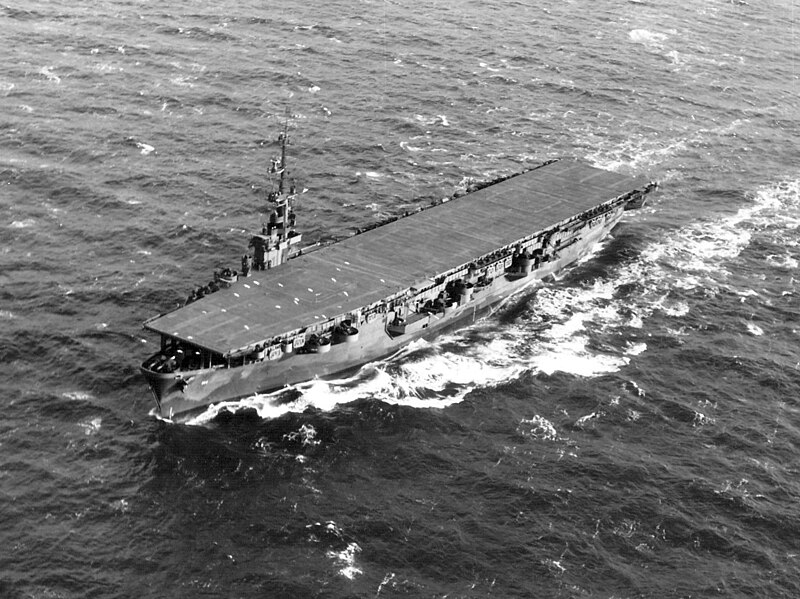
Next she ship’s group headed for Saipan and back to Apra Harbor in Guam, on 2 August and then USS Vella Gulf sailed for Okinawa on 5 August, arriving at Buckner Bay on the 9th, and back to Guam on 15 August to learn about the capitulation. She was next assigned to occupation duties of the home islands. By late August she was used as supply ship to coastal vessels, taxing stuff from Gilbert Islands while providing air cover for the replenishment group. She was in Tokyo Bay on 10 September, until the 21th. She won one battle star for WW2 service.
She embarked 650 vets at Okinawa for home via Pearl Harbor, and to San Francisco on 14 October. She stayed at Puget Sound as training ship until late March 1946, and entered San Diego on 27 March, then Port Angeles, Tacoma, and inactivation, then she was towed to Seattle on 7 April, decommissioned on 9 August 1946. Reclassified as a helicopter carrier (CVHE-111), 12 June 1955, and transferred to Military Sea Transportation Service now as T-AKV-11 but she ws never reactivated and instead stricken on 1 June 1960, reinstated on 1 November, struck again on 1 December 1970, and sold for BU on 22 October 1971.
 Siboney (ex-Frosty Bay) CVE-112
Siboney (ex-Frosty Bay) CVE-112
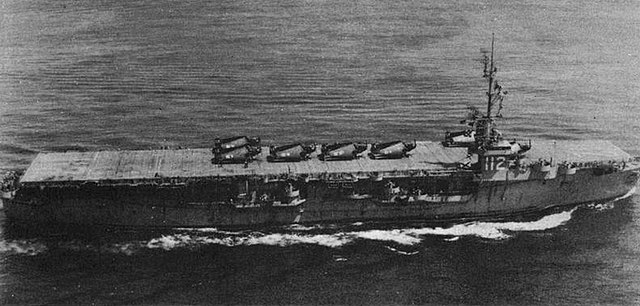
USS Forsty Bay was laid down on 1 April 1944 and launched as Siboney (a Spanish-American War battle in Cuba) on 9 November 1944. She was commissioned on 14 May 1945 under command of Captain Stanhope Cotton Ring and there as home she could join the last air strikes on mainland Japan in preparation for Operation Downfall.
After fitting out in Seattle area, she departed on 31 May for San Diego, shakedown took place until 3 August, she loaded supplies and aircraft, personal, Air Group 36, and sailed for the pacific on 8 August via Pearl Harbor. She leaned about V-Day one day before she arrived so on 15 August she landed planes and personal, waiting for instructions. In September she was ordered to sail to Okinawa, via the Marshall and stopped in the Carolines and later the Philippine Islands underway. 5 October saw her dropping anchor in Buckner Bay and then she proceeded to Honshū whil perfoming a SAR mission to locate missing Rear Admiral William Dodge Sample’s PBM Mariner. She patrolled off Honshū 8–11 October and entered Tokyo Bay on 24 October, staying for occupation duties support until 16 November 1945 and recalled back home via Saipan, Manila, Hong Kong, Guam, and Pearl Harbor. She would returned for another WestPacific between 15 February and 7 May 1946.
She departed San Diego on 9 June 1947 for the Atlantioc fleet, via Panama, arrived in Norfolk on 26 June and trained to Guantánamo Bay in November, and the she was inactivated until March 1948, trained into May, then ferried planes to Yesilkoy in Turkey and back to HP to Norfolk, then a new cruise to the Near East and final Overhaul at Boston from October 1948 to January 1949 and a refresher cruise in Guantanamo Bay, then service with the Atlantic Fleet until 6 December 1949, and joing the inactive fleet, Philadelphia; but reactivated on 22 November 1950. On February 1951 she was reassigned to HP Norfolk and between 27 February and 10 April trained hard for war operations between Cuban and Canadian waters.
She departed for the Mediterranean for exercises from September to 14 November, training with NATO fleets and made carrier qualifications of A-1 Skyraiders and F4U Corsairs by January 1952 as well as Marine helicopter, before a modernization at Norfolk on 20 January 1953. She was back as ASW carrier in the Atlantic with her own hunter-killer group, until August 1953 and until December she returned with the Mediterranean 6th Fleet.
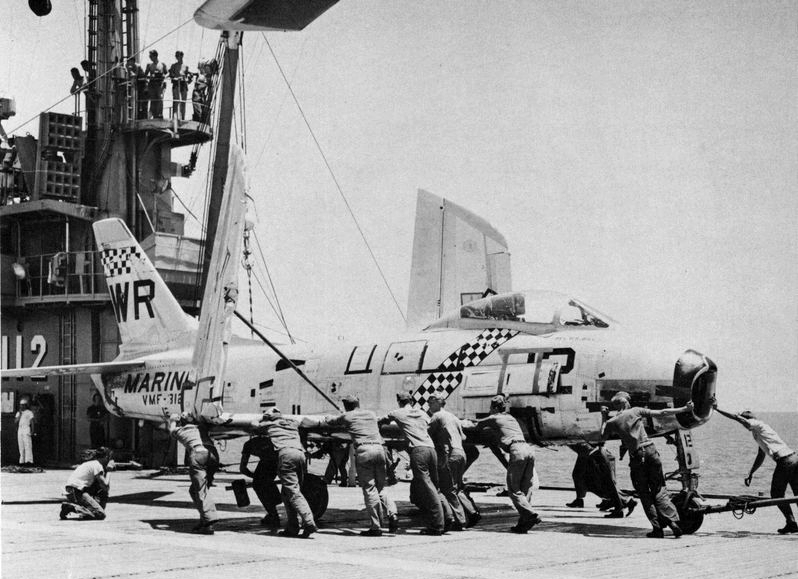
In 1954–1955 USS Siboney trained along the east coast, punctuated with midshipman cruises, notably to Spain and an overhaul at Philadelphia from 28 September 1954 to 22 January 1955. After east coast training to 4 October, she loaded supplies and sail for the Gulf of Mexico to use her helicopters for relief missions for Tampico hit by a hurricane.
1956 saw her back to east coast routine in January–May, and last Med TOD with the 6th Fleet in 26 May until 6 July. She was back at Philadelphia on 27 July, decommissioned, Atlantic Reserve Fleet. Never reactivated, she was stricken on 1 June 1970, sold 1971.
 Puget Sound (ex-Hobart Bay) CVE-113
Puget Sound (ex-Hobart Bay) CVE-113
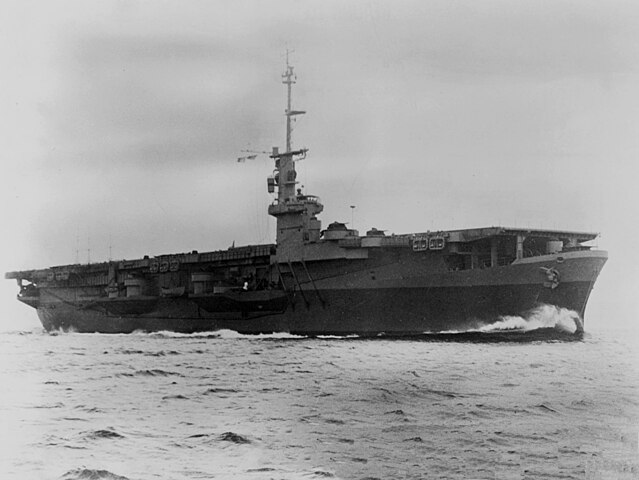
USS Hobart Bay was laid down on 12 May 1944, launched on 20 September 1944 and commissioned on 18 June 1945 under Captain Charles F. Coe. Post-trials and fitting out at Puget Sound she started her shakedown from 6 July 1945 and received Marine Air Group 6 for pilots qualifications. She left HP San Diego on 8 September for training in Hawaiian waters and sailed for occupation duties in Japan.
She was in Tokyo Bay on 14 October 1945, aircraft conducting mine spotting patrols to prepare more landings (10th Army) at Matsuyama and Nagoya. She trained in the Philippines, Hong Kong, and the Marianas and carried surplus aircraft from Apra Harbor in Guam, back to Pearl Harbor. She was back at San Diego on 23 January with MAG 6 detached and she returned for a run of “Magic Carpet” carrying vets home on May 1946, ferrying 1,200 men between San Diego and Pearl Harbor or between Alameda and Okinawa plus surplus aircraft.
She was inactivated in her namesake arsenal on 24 May 1946, decommissioned 18 October, Pacific Reserve Fleet, Tacoma. She was reclassified CVHE–113 on 12 June 1955, AKV–13 but never reactivated and stricken 1 June 1960, sold 10 January 1962. Her active carrer lasted for only one year, the poorest record of any of her class.
 Rendova (ex-Mosser Bay) CVE-114
Rendova (ex-Mosser Bay) CVE-114
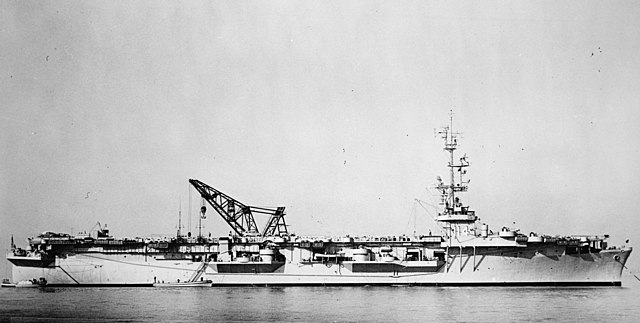
USS Mosser Bay was laid down on 15 June 1944, launched on 29 December 1944 and commissioned on 22 October 1945 under command of Capt. R. W. Ruble, at Willamette Iron and Steel Works. She proceeded to shakedown by early January 1946, and joined the 1st Fleet (East Pacific) in February and by March was in exercises along the west coast. By April the USN considered her suràlus to requirmenets so she was partly inactivated with a nucleus maintenance crew at San Diego, still active for the administrative HQ, CarDiv 15. The spring of 1947, saw her crewed back to full active duty for a year of training exercises between the west coast and Hawaii.
On 1 April 1948, she left San Francisco for hrr first European Tour via Panama, to Turkey with a cargo of purchased AT-6 training planes, landing them at Yesilkoy 28 April and on 4 May she transited via Suez to the Indian and Pacific Oceans, making good will visits along the way. After her WestPac she was back home at HP San Diego on 1 July and sailed to Tsingtao on the 28th, staying until 27 August, and back to San Diego by September. In 1949, she made supply and ferry runs between Tsingtao and Okinawa and from late April was back home. 1st Fleet training saw her budy until sent to Bremerton for a pre-inactivation overhaul, decommission on 27 January 1950, Pacific Reserve Fleet.
With the ar in Korea she was fully recommissioned on 3 January 1951, reporting in April, sailing on 3 July to Yokosuka (2 August), training off Okinawa and was in Kobe for 20 September, relieving USS Sicily at CTG 95.1.
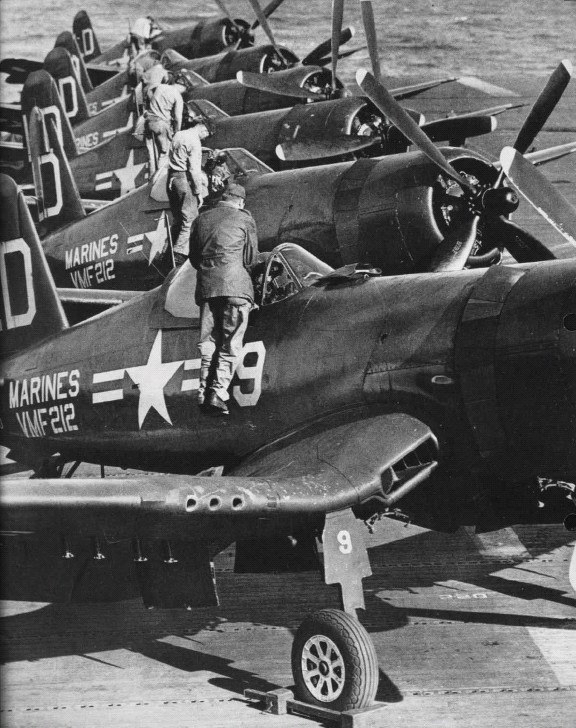
Corsairs of VMF-212 on USS Rendova off Korea, 1951
On the 22nd, she received her F4Us from VMF 212 (Marine Fighter Attack Squadron 212 “Lancers”). The 23rd, she carrier qualifications followed and she loaded ammo on the 24th at Sasebo the sailed to Operating area “Nan”, Yellow Sea, relieving HMS Glory (R62) at the head of CTE 95.11. She launched her first stike on 26 August and operated on the west coast alongside with HMAS Sydney (R17) as CTE 95.11. VMF-212 performed 1,743 sorties, many missions for the SK, Marines and UN forces. On 17 November along she earned the record for 64 sorties.
This ended on 6 December, when she sailed for home, arrived on the 22 at San Diego. In 1952 she saw west coast training, 1st Fleet and by September, took part in Operation “Ivy” and “Mike”, first hydrogen bombs tests in the Marshalls, with part of her crew subjected to exposure (.02 rem gamma) while off Eluklab Island.
She was in reserve by 1953, but resumed training until sent for WestPac deployment in 1954 as part of a hunter-killer Squadron. In the summer she was back for training off California. She sailed to Mare Island and was sent in the Pacific Reserve Fleet on 2 February 1955, decommissioned 30 June. She was reclassified AKV-14 in 1959, but never reactivated until stricken on 1 April 1971.
 Bairoko (ex-Portage Bay) CVE-115
Bairoko (ex-Portage Bay) CVE-115
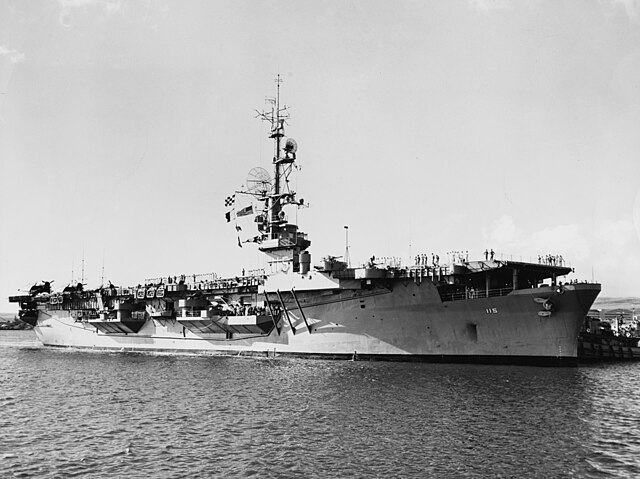
USS Portage Bay was laid down on 25 July 1944, renaled and launched as Bairoko (a battle in New Georgia, 20 July 1943) on 25 January 1945, the commissioned on 16 July 1945 under command of Captain H. B. Temple. The war was drawing to an end, the last air strikes were performed on mainland Japan and there was little chance she would be ready in time due to the usual sea trials, acceptance trials, initial training, shakedown and weapons/pilots qualifications, then maneuvers and exercises until December 1949. She still made two to WestPac cruises from 18 October 1946 to 25 January 1947 and from 18 February to 30 May 1947 and was present for the atomic bomb test at Eniwetok. On 16 December 1949, she was inactivated at San Francisco and was decommissioned, reserve, on 14 April 1950.
With the Korean war, she was recommissioned on 12 September 1950 and between November 1950 and August 1953 she made three tours of duty off Korea. The first from 14 November 1950 to 15 August 1951, saw the most action from her air group of Corsairs and helicopters with daily ground support sorties and another tour between 1st December 1951 to 9 June 1952 then a third from February to August 1953, the latter in support to UN Forces blockading North Korea. She reported hundreds of strikes, detroying all sorts of targets and loosing planes and pilots in the process. On 9 May 1951 alone she suffered a flash fire accident, lossing 6 killed, 13 injured, in Japanese waters. She would be awarded three battle stars.
Back home in August 1953, until January 1954 she took part in exercizes after an overhaul and also later was present at a the hydrogen bomb tests in the Eniwetok-Bikini area. At the time, radiation was not well understood and 16 crew members on deck were irradiated during Castle Bravo test (1 March 1954). May-June 1954 saw her off San Diego and by July 1954 she sailed to Long Beach Naval Shipyard for her pre-inactivation overhaul, decommissioned reserve at San Francisco from 18 February 1955, stricken 1 April 1960, scrapped at Hong Kong in 1961.
 Badoeng Strait (ex-San Alberto Bay) CVE-116
Badoeng Strait (ex-San Alberto Bay) CVE-116
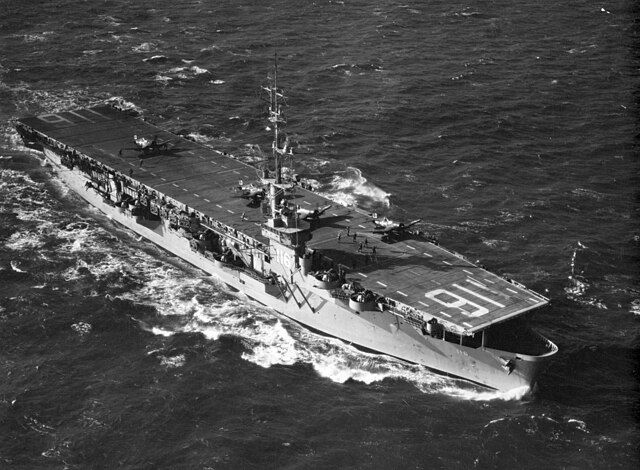
USS San Alberto Bay was laid down on 18 August 1944, renamed and launched on 15 February 1945 and completed on 14 November 1945 under Captain Thomas A. Turner, Jr. She was assigned to the Pacific Fleet after her shakedown cruise from San Diego, fixes, initial training until March 1946, followed by a TOD in Hawaii and decommissioned on 20 April 1946, but recommissioned on 6 January 1947.
From February 1947 to June 1950 USS Badoeng Strait served with the Pacific 7th fleet as ASW carriers, training and testing equipments and tactics while undergoing many exercises and being in and out as flagship of CarDiv 17 and CarDiv 15.
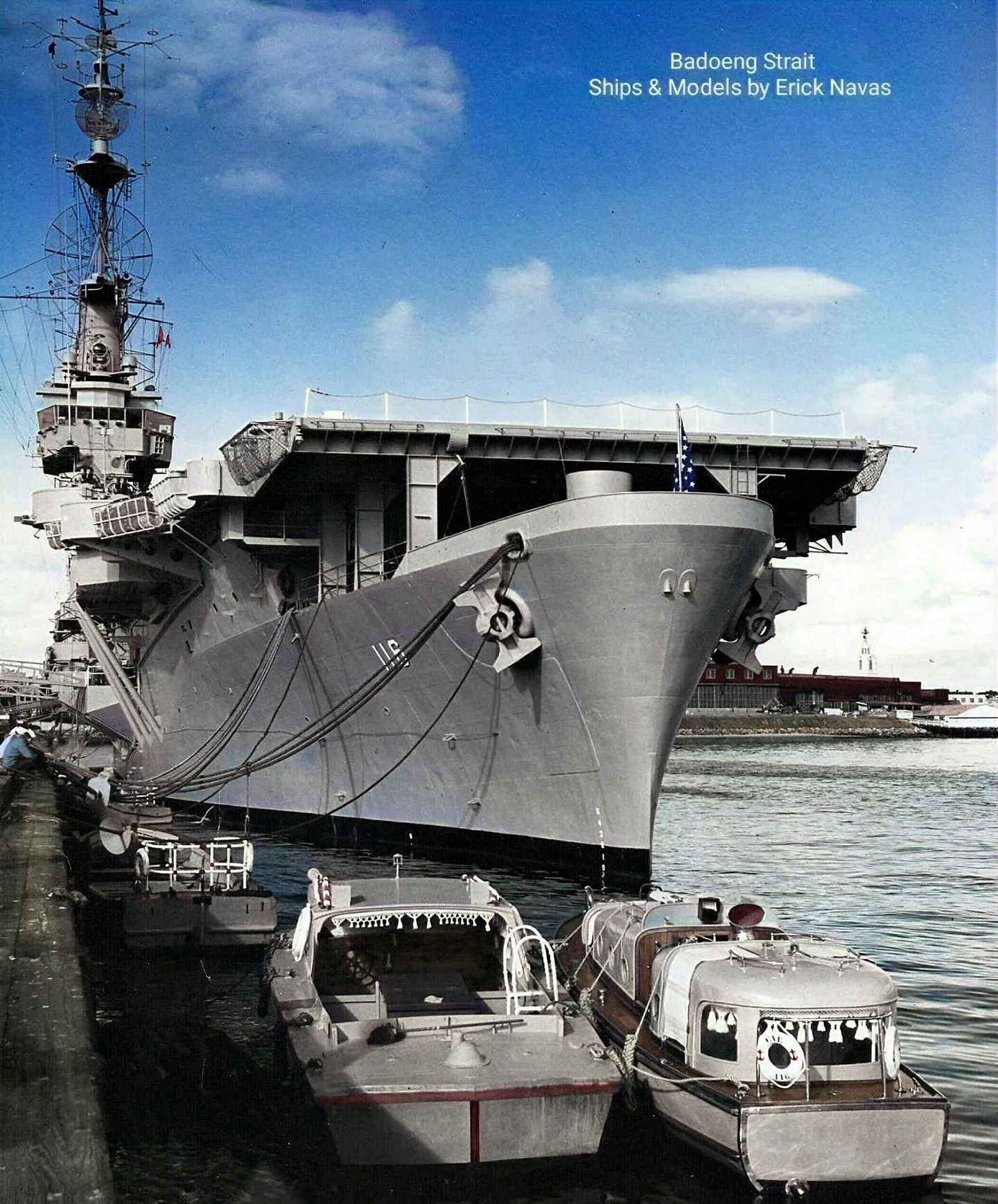
USS Badoeng strait postwar colorized by Erick Navas src
The Korean War saw her fully mobilized for war on July 1950 and until February 1953 she made three tours of duties off Korea: The first between 29 July 1950 and 23 January 1951, the second between 2 October 1951 to 14 February 1952, and a third and last one between 6 October 1952 and 11 February 1953 as part of TF 95 and TF 77. All the time, she did not sent air strikes but only made the ASW screen of these units, with endless hours of patrols. Her helicopters and aircraft also patrolled during the UN-backed blockade-escort force. But hse had a few support air strikes at the initial phase in 1950, close ground support. Her Corsairs were put to good use defending the besieged Pusan Perimeter from 6 August to 12 September 1950 and also the Inchon landing on 15 September as well as the Hŭngnam evacuation on 9–24 December 1950. For her global service she reveived a Navy Unit Commendation and six battle stars.
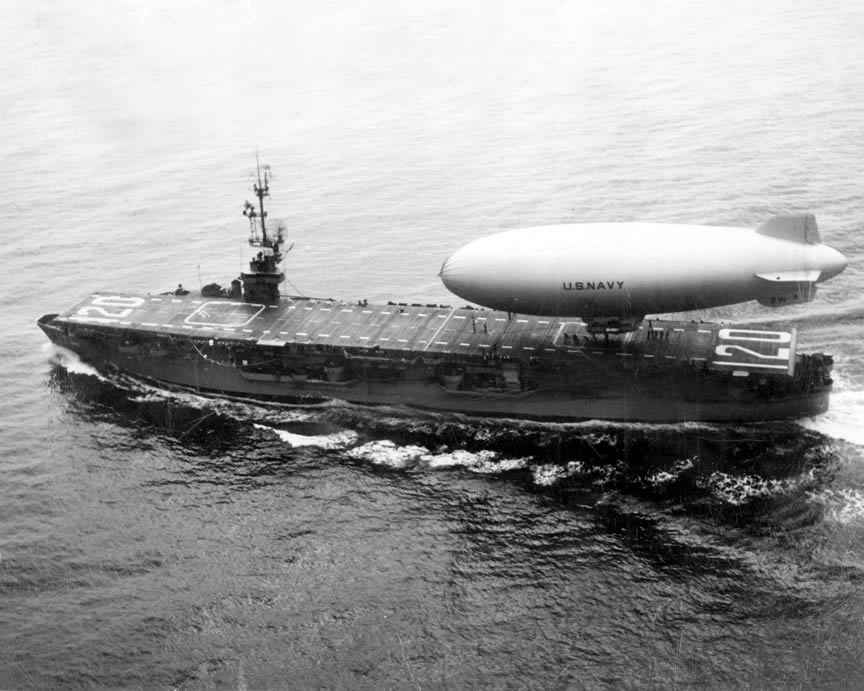
Back home she had a modernization from April to September 1953 and went on testing ASW equipments and tactics with new naval aircraft and helicopters, fleet training of with the Marine assault helicopters, pioneering future operations in Vietnam. She made a last tour in the Far East, with Operation Redwing in February–July 1956.
Back home she sailed to Bremerton on 14 January 1957 for inactivation, decommissioned, Pacific reserve on 17 May 1957, but stricke, sold and scrapped in 1972.
 Saidor (ex-Saltery Bay) CVE-117
Saidor (ex-Saltery Bay) CVE-117

USS Saltery Bay was laid down on 29 September 1944, launched 17 March 1945 and renamed, but only commissioned by 4 September 1945, the war was over for a few days, under Capt. A. P. Storrs. She proceeded to her shakedown off the west coast, was assigned to Pearl Harbor (12 December 1945 to 20 March 1946) and then the Atlantic Fleet, sailing cia Panama to her new HP, Norfolk, from 16 April to 22 April, and back to the west coast, HP San Diego. She departed on 6 May, for Bikini Atoll, documenting on the 24th with a full photographic laboratory the atomic bomb tests of Operation Crossroads. The famous movie had been projected and seen on all medias billion of times. This happend during the nuclear explosions of 1 July and 25 July. She left the area on 4 August for San Diego, seeing little activity but in local waters until 1947, and started inactivation.
She was decommissioned on 12 September 1947, mothballed in the Pacific Reserve Fleet, San Diego. Reclassified CVHE-117 on 12 June 1955, AKV-17 on 7 May 1959, but never reactivated and stricken 1 December 1970, sold 22 October 1971.
 USS Sicily (ex-Sandy Bay) CVE-118
USS Sicily (ex-Sandy Bay) CVE-118
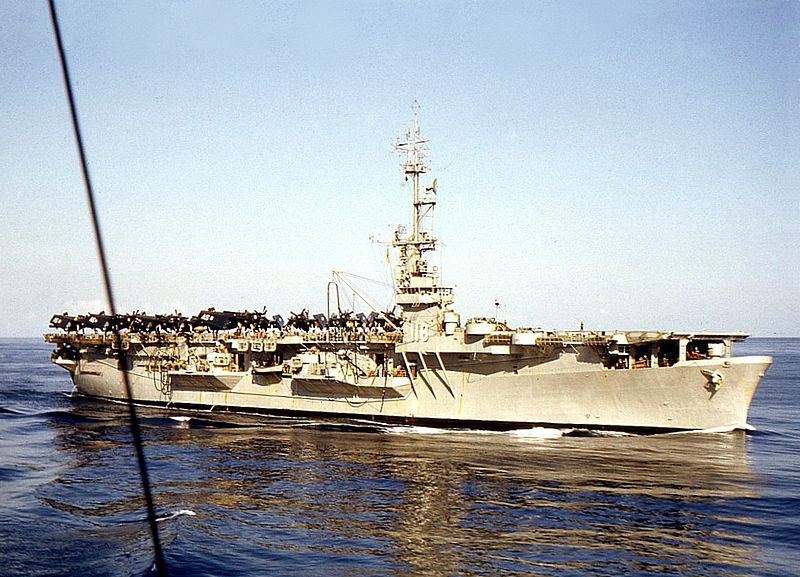
USS Sandy Bay was laid down on 23 October 1944, launched 14 April 1945 and renamed, then commissioned on 27 February 1946, under command of Capt. B. W. Wright, fitted out at Portland and she sailed to gather her supplies at Seattle, then headed to San Diego to start her shakedown training in April-May 1946. On the 15th of May, she transited Panama to New York City and via Norfolk, received post-fixes at Brooklyn Navy Yard in June to 30 September and sailed to NS Argentia for cold weather training.
Until 3 April 1950, she operated with the Atlantic Fleet, HP Norfolk, until reassigned to the Pacific Fleet, HP San Diego from 28 April. Her ASW exercizes were cancelled due to the war in Korea, and on 2 July she sailed to Asia, assigned as flagship, CarDiv 15. From 3 August launched aircraft of VMF-214 (Marine Sqn. “Black Sheep” of “Pappy” Boyington’s fame). They made air strikes over Pohang, or the Inchon landing area as well as covering the advance to Seoul, and withdrawal from the Chosin Reservoir to Hungnam. Quite a fantastic deployment, which took its toll on the corsairs deployed and its pilots. She sailed for home on 5 February 1951.
She made a second tour of dury in Korea from 13 May to 12 October 1951, and covered operations on the east and west coast of Korea. She had a last tour from 8 May to 4 December 1952, for the UN Escort and Blockading Force. Her post-armistice deployment was from 14 July 1953 to 25 February 1954. While back she entered the Pacific Reserve Fleet (1954-1960) and was decommissioned on 4 October 1954, stricken on 1 July 1960 and sold for scrap on 31 October 1960. She won the Korean Service Medal with 6 battle stars, one of the most decorated of the class.
 USS Point Cruz (ex-Trocadero Bay) CVE-119
USS Point Cruz (ex-Trocadero Bay) CVE-119
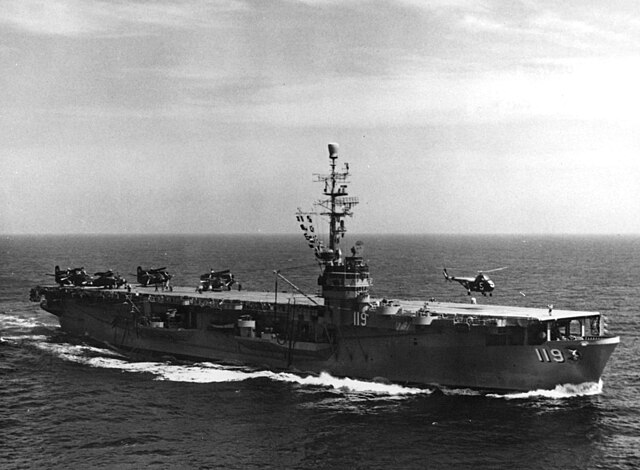
USS Point Cruz was laid down as USS Trocadero Bay on 4 December 1944. She was launched on 18 May 1945 and completed by 16 October 1945, already after V-Day. After sea trials, fixes, navy acceptance and shakedown, she started weapons and pilot qualifications, staying like her sisters off the West Coast, notably the sunnier California, from October 1945 to March 1946. She ferried aircraft to forward bases while making her first WestPac (Western pacific Cruise). She was eventually inavtivated at Puget Sound Naval Shipyard, 3 March 1947, decommissioned on 30 June 1947 in the Pacific Reserve Fleet at Bremerton (Washington state).
The war in Korea saw her fully reactivated, recommissioned on 26 July 1951. She sailed on 4 January 1953 for coastal training and had an extensive overhaul to be specialized as ASW carrier for Hunter-Killer Groups. While underway to San Diego, she went through a Pacific storm and was damaged to such a point she had to be repaired for several months. She reached eventually Sasebo in Japan, and immediately started to patrol the Korean coast in May and the summer 1953 under Captain John T. Hayward. Post-armistice, she was the center of a newly formed helicopter squadron for Operation Platform, airlifting Indian troops to Panmunjom in a POW exchange. She was back to San Diego in late December 1953, had a new overhaul and made a new WestPac from April 1954 and acted as command ship, CarDiv 17.
Back to San Diego in November 1954 she returned in the Pacific on 24 August 1955, joining the 7th Fleet, as flagship, CarDiv 15. She left Yokosuka on 31 January 1956 for Long Beach in February for inactivation at Puget Sound and was decommissioned on 31 August 1956, Bremerton Group, Pacific Reserve Fleet. She became AKV-19 on 17 May 1957 but was reactivated on 23 August 1965, now assigned to the Military Sea Transportation Service (MSTS) and renamed USNS Point Cruz (T-AKV-19) by September, starting a Vietnam carrer as aircraft ferry and logistical support under back home and decommissioned on 16 October 1969, stricken 15 September 1970, sold 1971.
 USS Mindoro CVE-120
USS Mindoro CVE-120
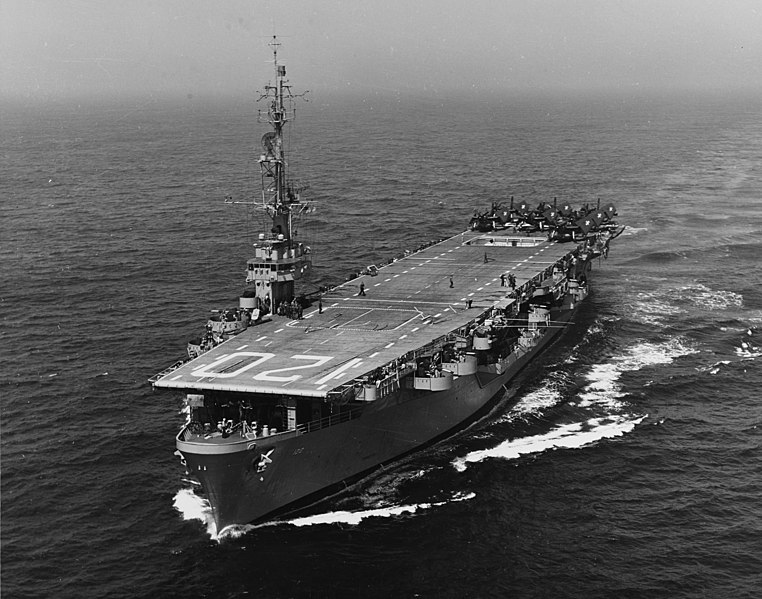
USS Mindoro was laid down on 2 January 1945 as CVE-120, launched on 2 January 1945, commissioned on 4 December 1945, so missing the war entirely. But she was too advanced to be decommissioned and she was completeted fully, staffed and performed her trials, initial training and shakedown cruise along the West Coast until January 1946. She then was reassigned to the East Coast and Norfolk in Virginia, her new homeport from 15 February.
She was assigned to Carrier Division 14 (CarDiv 14) for training exercises and carrier operations. By May she was in the Carribeans for a large scale maneuver with the 8th Fleet and resumed her East Coast routine, ranging from Cuban waters to Halifax in Nova Scotia. She qualified her pilots to ASW exercises, integrated into a combined-arms approach the USN tried to evaluate. USS Mindoro became part of a hunter-killer groups, such as the ones created by the allies for Atlantic proactive approach to “escort”. The combined element meant she trained in close contact with patrol crafts and blimps, like the K class. Joint operations meant Blimps often even landed on USS Mindoro doe communication and supplies. She was homeported to Norfolk and by November 1947, took part in the Civilian Cruise Program, a PR (public relations) program postwar to try to enlist new recruits.
In 1948 and 1949, her routine was interrupted by cruisers across the Atlantic and visits to Britain and other European ports; In 1950, she made her first Mediterranean Tour of Duty with the 6th Fleet. She formed a part of its ASW screen and escorted cruisers and destroyers. Wuth the start of the Korean War she could have left the 6th Fleet like many other vessels, but she stayed with its screen. In September 1952 she took part in NATO exercise Mainbrace, off Norway-Denmark. By 1954, she made her second Med TOD without nothing of note.
She made her last training exercises off the Virginia Capes by January 1955 and was back to Boston on the 17th to be inactivated. She was decommissioned on 4 August, Atlantic Reserve Fleet. She became AKV-20 on 7 May 1959 but never reactivated and stricken on 1 December 1959, sold in June 1960, BU in Honk Kong.
 USS Rabaul CVE-121
USS Rabaul CVE-121
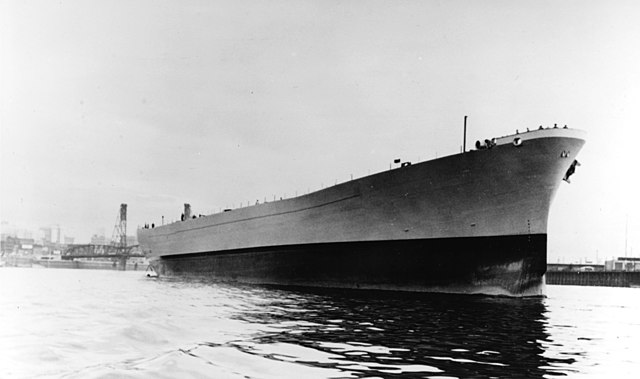
USS Rabaul (CVE-121) was laid down on 29 January 1945, launched on 14 July 1945 but never commissioned. Instead as the war was practically over, she went straight to the Reserve Fleet and stayed there in the mothballs, half-completed. She was eventually never reactivated, and struck on 1 September 1971, then Sold for scrap on 25 August 1972. No other USN ship ever had that name.
She was one of the many vessels ordered and built for the Navy but never staffed and never operational. She could have been sold, but this was against US practice.
Accepted into the 19th Fleet, (the Pacific Reserve Fleet), Rabaul was berthed at Tacoma without seeing any active service. The warship was mothballed there during the early years of the Cold War and served as a mobilization reserve in case of war with the Soviet Union. Reclassified CVHE-121 in June 1955, she was transferred to the San Diego Group, Pacific Reserve Fleet in June 1958 and reclassified AKV-21 in May of the following year. She remained in reserve at San Diego until 1 September 1971 when she was struck from the Naval Vessel Register. Rabaul was sold on 25 August 1972 to the Nicolai Joffe Corporation of Beverly Hills, California, for scrapping at its San Francisco Bay area facility in Richmond, California, the former Kaiser Shipbuilding Yard No. 3. Shortly before scrapping, she was used in the closing scenes of the 1973 movie Magnum Force.
 USS Palau CVE-122
USS Palau CVE-122
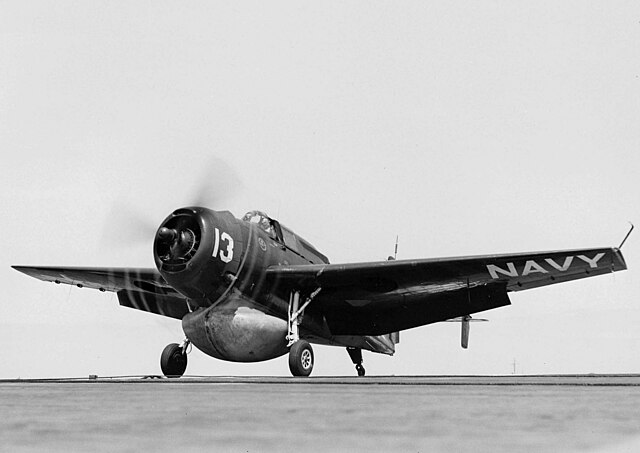
USS Palau was laid down on 19 February 1945, launched on 6 August 1945, Commissioned as the Navy started its post-war demobilization. Shakedown took place off California, and she transited the Panama Canal for post shakedown availability at Boston. 11 May saw her relocated to Norfolk and there she was “immobilized” until May 1947 (not decommissioned, there was a small team watching over her). On 22 May she gathered her crew and left for Cuba for a refresher training, back to Norfolk and New York, then via Recife she sailed to the West African coast for exercises and back on 16 August.
She had another availability at Boston; immobilized at Norfolk from December 1947 to March 1948, before restating operations off the east coast and sailing for a Med Cruise on 3 June, to ferry planes puchased by Turkey under the Turkish Aid Program. They were landed at Yesilkoy. She also helped evacuating an U.N. delegation from Haifa during the Egypt-Israeli war on 8 July. She was later in Rhodes until 24 July and back to Haifa after a truce was negotiated. Back to Norfolk on 7 August she trained on the western Atlantic from Canada to the West Indies until April 1952. She then made another Med Cruise with the 6th Fleet, until the fall of June, and back to the East Coast and 2nd Fleet exercises.
Although planned for inactivation in early 1953, she made a final ferry mission to Yokosuka from 8 August to 22 October (replacement air groups for last operations in Korea) and while back at Philadelphia Naval Shipyard she was inactivated and decommissioned on 15 June 1954, Atlantic Reserve Fleet. She was stricke on 1 April 1960, sold on 13 July 1960.
 USS Tinian and CVE-123 to 139
USS Tinian and CVE-123 to 139
USS Tinian (CVE-123) was laid down on 20 March 1945, launched 5 September 1945 but never commissioned, she went straight to Reserve Fleet and was struck 1 June 1970 and sold for scrap on 15 December 1971. USS Bastogne (CVE-124) was laid down on 2 April 1945, but Cancelled before launching on 12 August 1945.
Same scenario:
-USS Eniwetok (CVE-125) laid down 20 April 1945
-USS Lingayen (CVE-126) 1st May 1945
-USS Okinawa (CVE-127) 22 May 1945
And three unnamed vessels, CVE-128 to CVE-139.


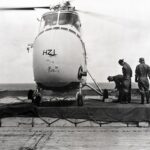
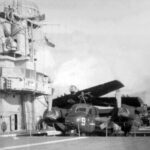
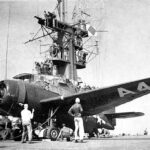
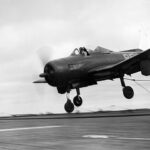
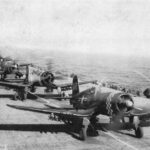

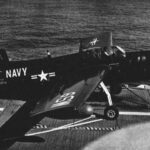
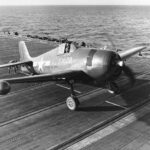
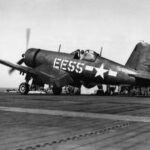
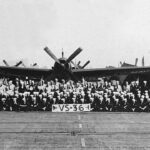
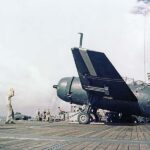
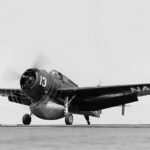
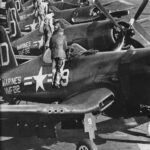
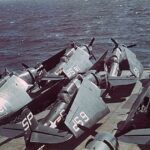
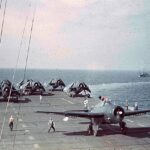
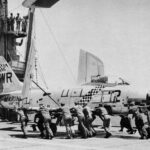
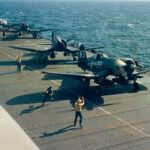
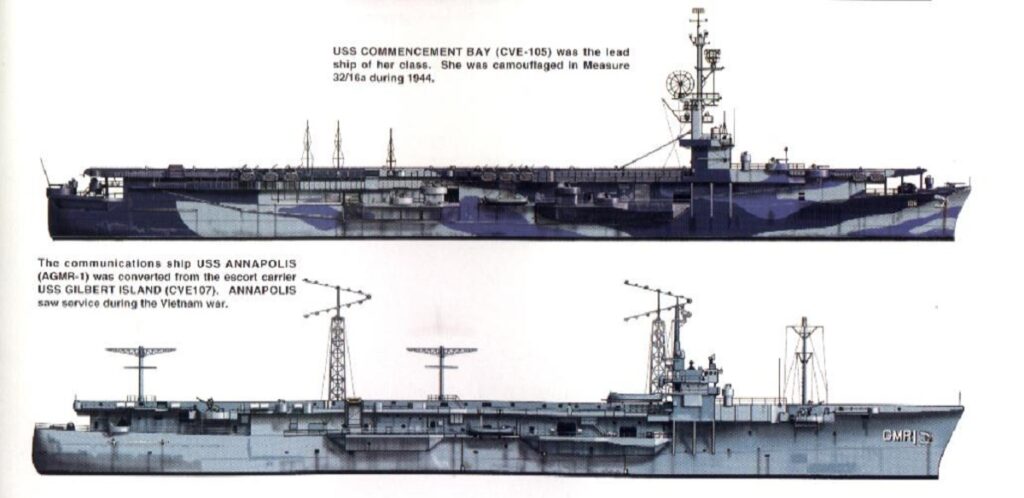
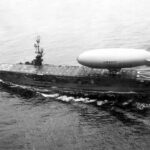
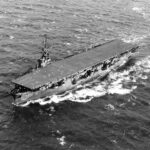
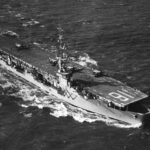
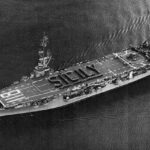
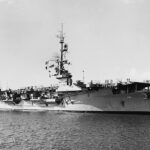
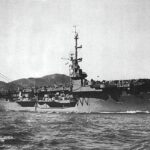
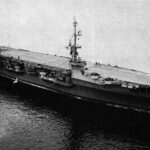
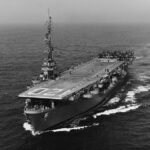
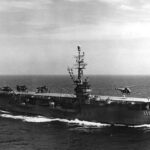
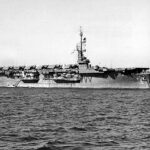
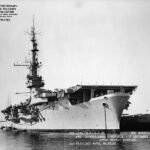
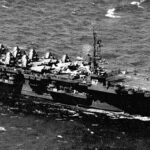
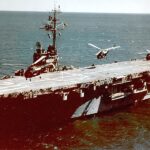
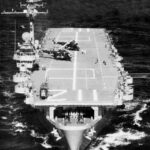
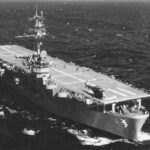
 Latest Facebook Entry -
Latest Facebook Entry -  X(Tweeter) Naval Encyclopedia's deck archive
X(Tweeter) Naval Encyclopedia's deck archive Instagram (@navalencyc)
Instagram (@navalencyc)





 Austrian Navy
Austrian Navy French Navy
French Navy Royal Navy
Royal Navy Armada Espanola
Armada Espanola K.u.K. Kriegsmarine
K.u.K. Kriegsmarine Dansk Marine
Dansk Marine Nautiko Hellenon
Nautiko Hellenon Koninklije Marine 1870
Koninklije Marine 1870 Marinha do Brasil
Marinha do Brasil Osmanlı Donanması
Osmanlı Donanması Marina Do Peru
Marina Do Peru Marinha do Portugal
Marinha do Portugal Regia Marina 1870
Regia Marina 1870 Nihhon Kaigun 1870
Nihhon Kaigun 1870 Preußische Marine 1870
Preußische Marine 1870 Russkiy Flot 1870
Russkiy Flot 1870 Svenska marinen
Svenska marinen Søværnet
Søværnet Union Navy
Union Navy Confederate Navy
Confederate Navy Armada de Argentina
Armada de Argentina Imperial Chinese Navy
Imperial Chinese Navy Marinha do Portugal
Marinha do Portugal Mexico
Mexico Kaiserliche Marine
Kaiserliche Marine 1898 US Navy
1898 US Navy Russkiy Flot
Russkiy Flot French Naval Aviation
French Naval Aviation Russian Naval Aviation
Russian Naval Aviation Sovietskiy Flot
Sovietskiy Flot Royal Canadian Navy
Royal Canadian Navy Royal Australian Navy
Royal Australian Navy RNZN Fleet
RNZN Fleet Chinese Navy 1937
Chinese Navy 1937 Kriegsmarine
Kriegsmarine Chilean Navy
Chilean Navy Danish Navy
Danish Navy Finnish Navy
Finnish Navy Hellenic Navy
Hellenic Navy Polish Navy
Polish Navy Romanian Navy
Romanian Navy Turkish Navy
Turkish Navy Royal Yugoslav Navy
Royal Yugoslav Navy Royal Thai Navy
Royal Thai Navy Minor Navies
Minor Navies Albania
Albania Austria
Austria Belgium
Belgium Columbia
Columbia Costa Rica
Costa Rica Cuba
Cuba Czechoslovakia
Czechoslovakia Dominican Republic
Dominican Republic Haiti
Haiti Hungary
Hungary Honduras
Honduras Estonia
Estonia Iceland
Iceland Eire
Eire Equador
Equador Iran
Iran Iraq
Iraq Latvia
Latvia Liberia
Liberia Lithuania
Lithuania Mandchukuo
Mandchukuo Morocco
Morocco Nicaragua
Nicaragua Persia
Persia San Salvador
San Salvador Sarawak
Sarawak Uruguay
Uruguay Venezuela
Venezuela Zanzibar
Zanzibar Warsaw Pact Navies
Warsaw Pact Navies Bulgaria
Bulgaria Hungary
Hungary

 Bundesmarine
Bundesmarine Dutch Navy
Dutch Navy Hellenic Navy
Hellenic Navy Marina Militare
Marina Militare Taiwanese Navy
Taiwanese Navy Chinese Navy
Chinese Navy Indian Navy
Indian Navy Indonesian Navy
Indonesian Navy JMSDF
JMSDF North Korean Navy
North Korean Navy Philippines Navy
Philippines Navy ROKN
ROKN IDF Navy
IDF Navy Royal New Zealand Navy
Royal New Zealand Navy Egyptian Navy
Egyptian Navy South African Navy
South African Navy

































 RN
RN
 Marine Nationale
Marine Nationale
 Soviet Navy
Soviet Navy
 dbodesign
dbodesign